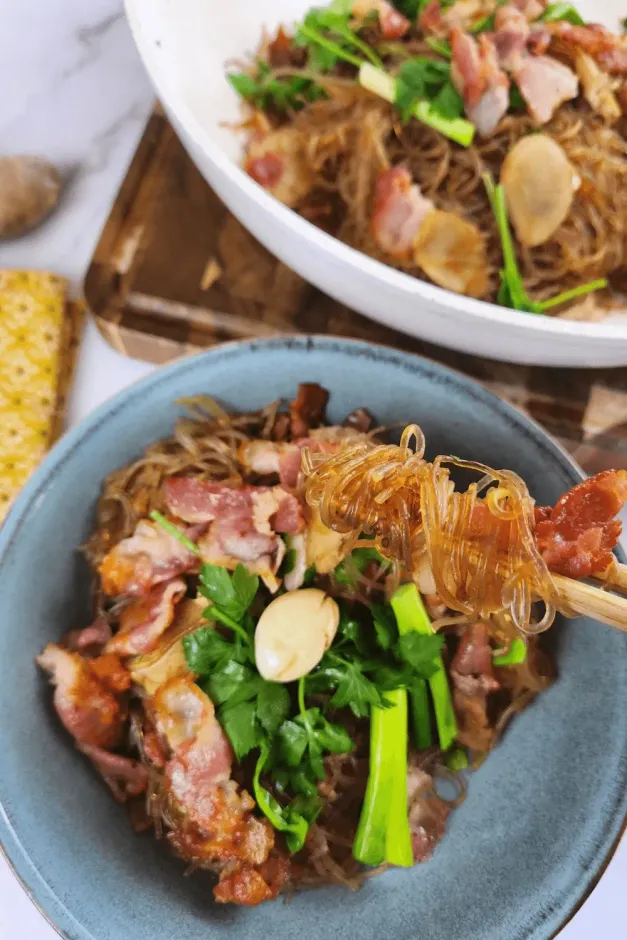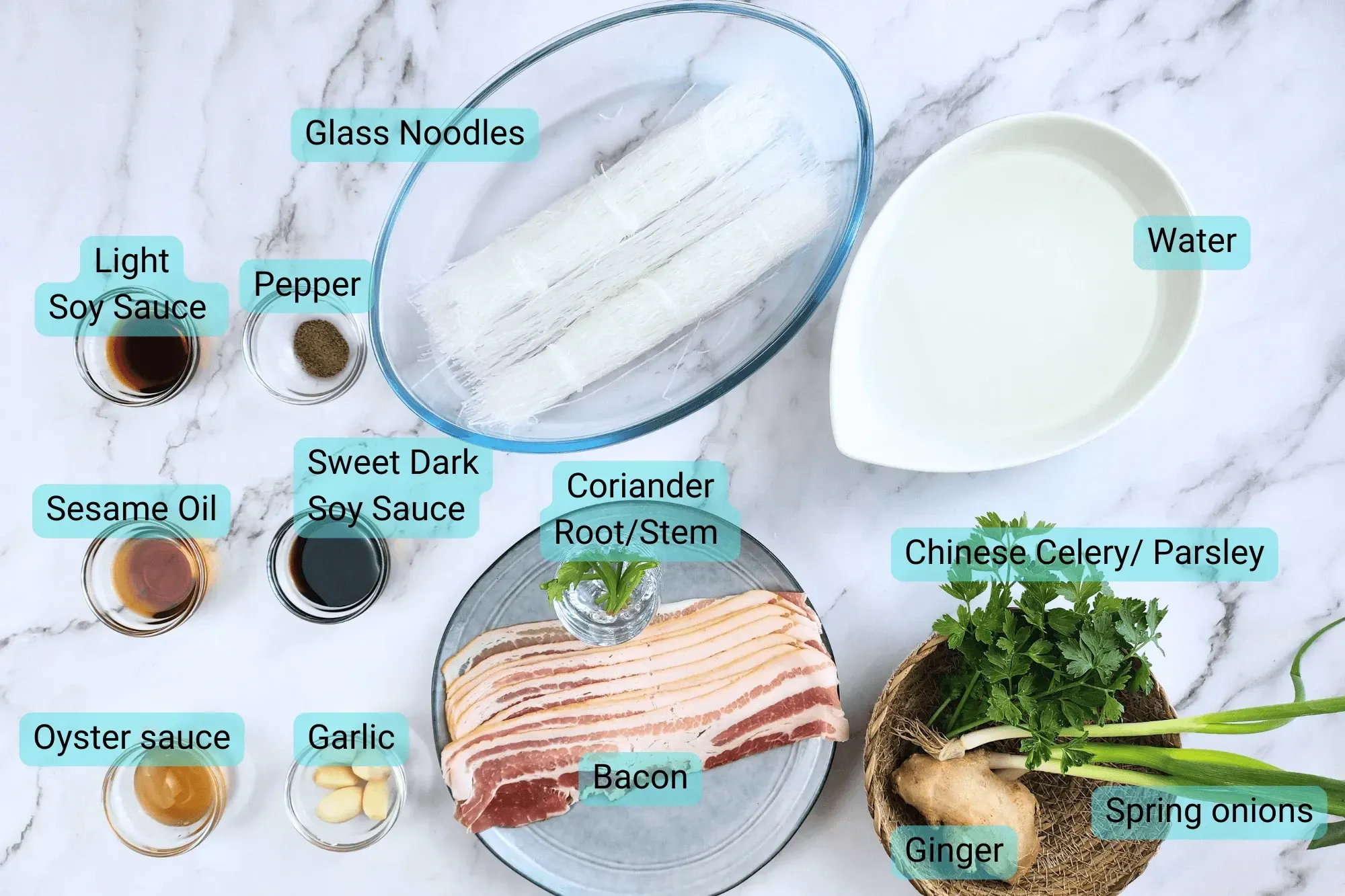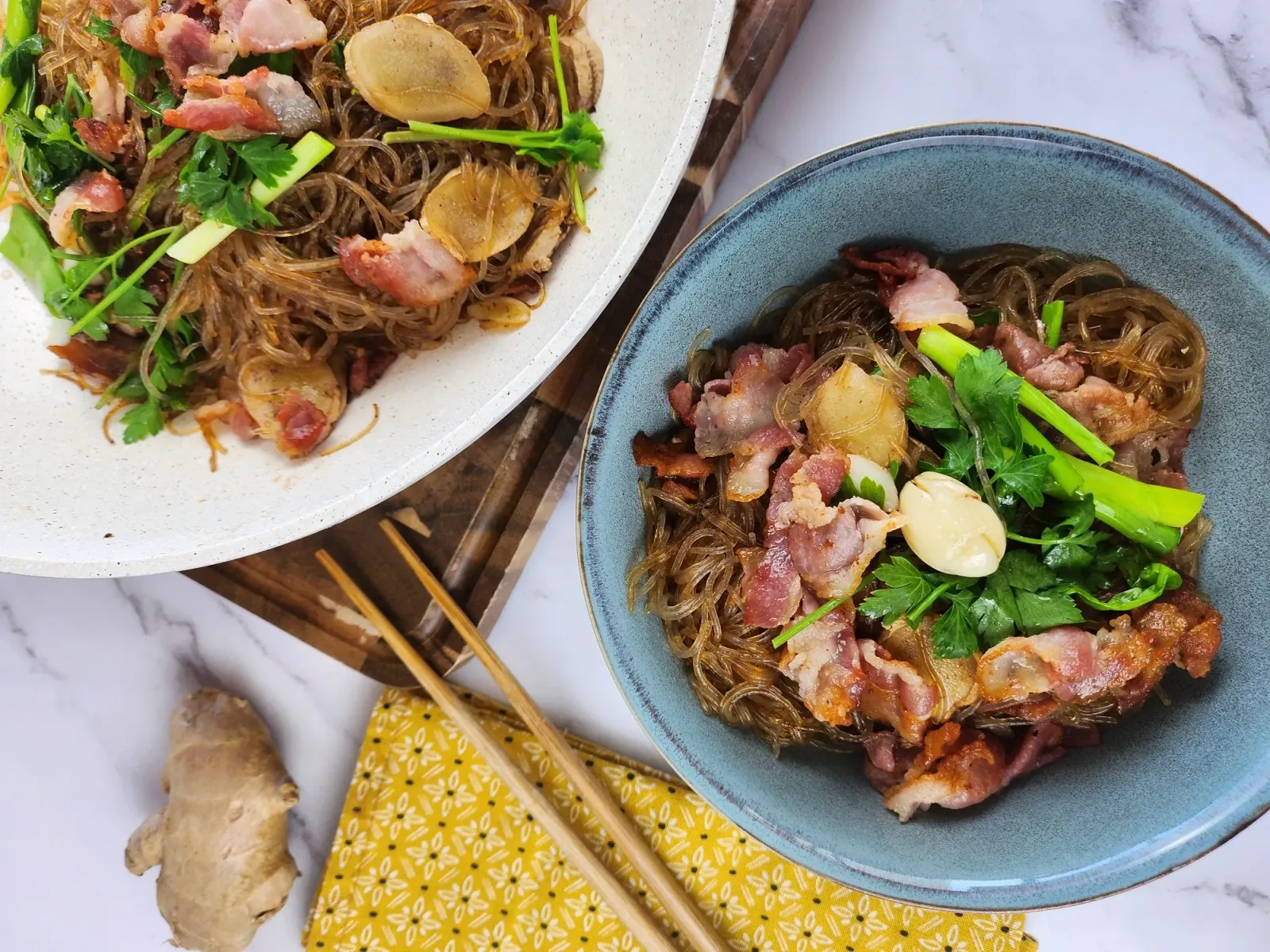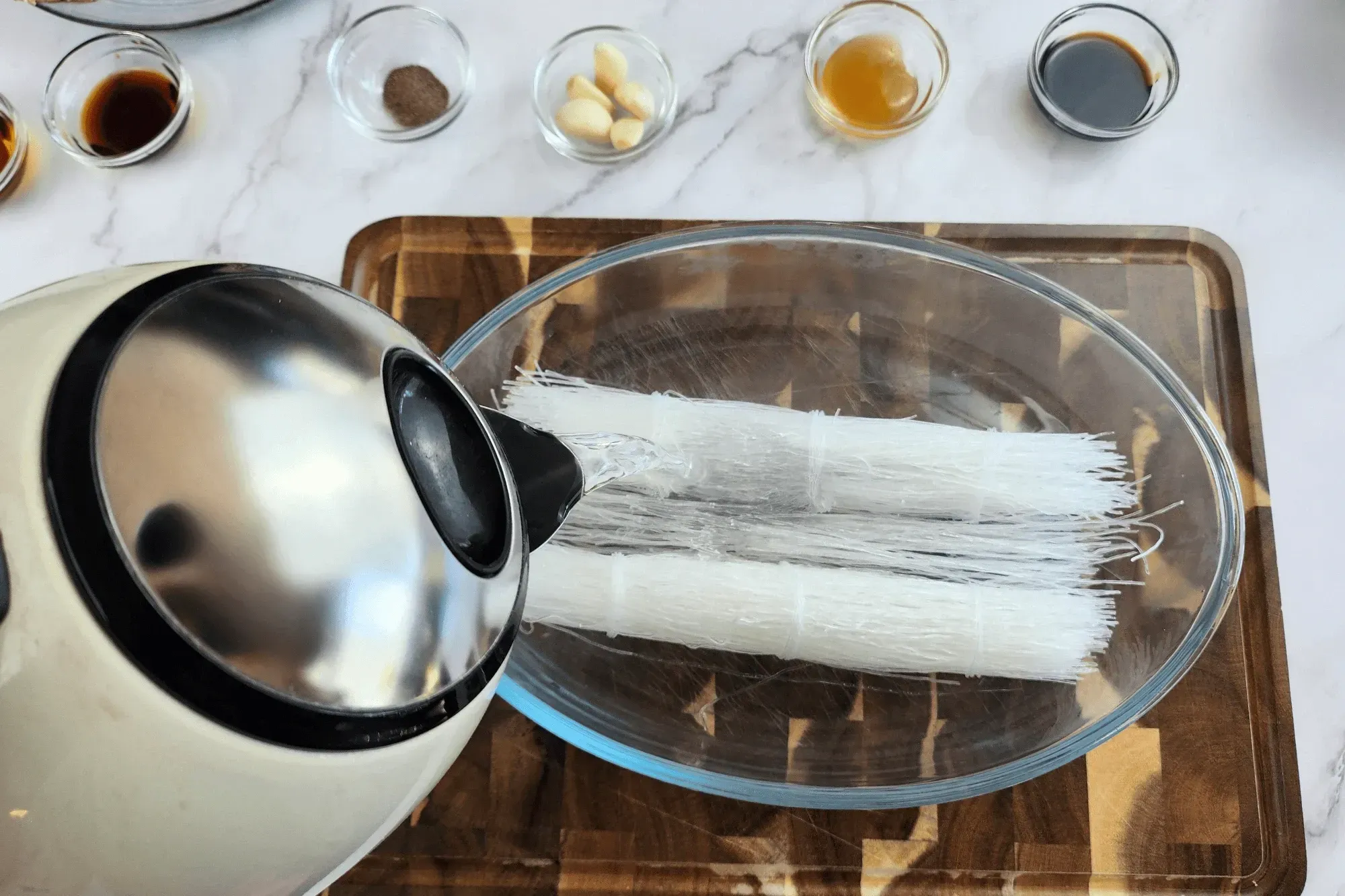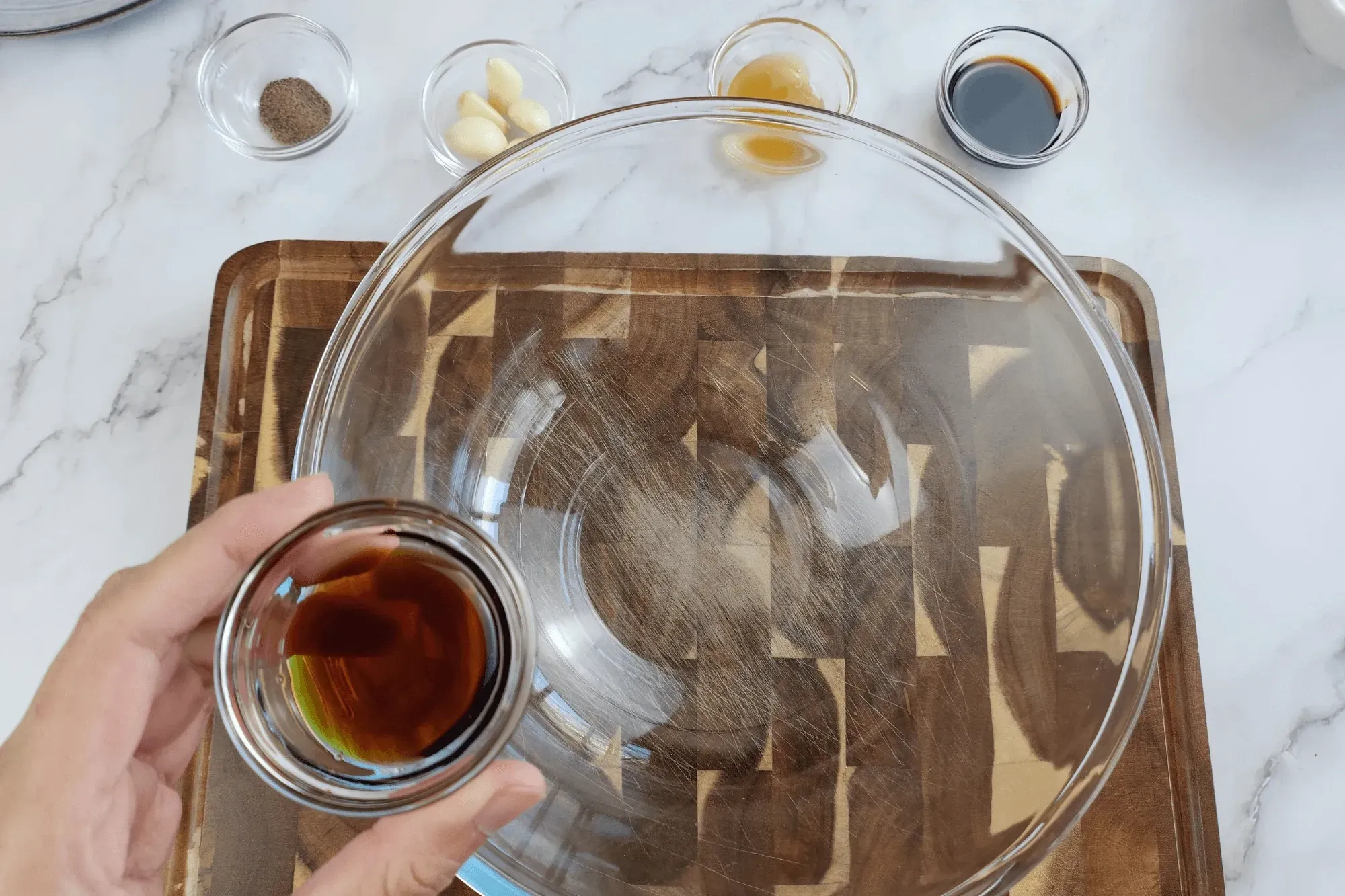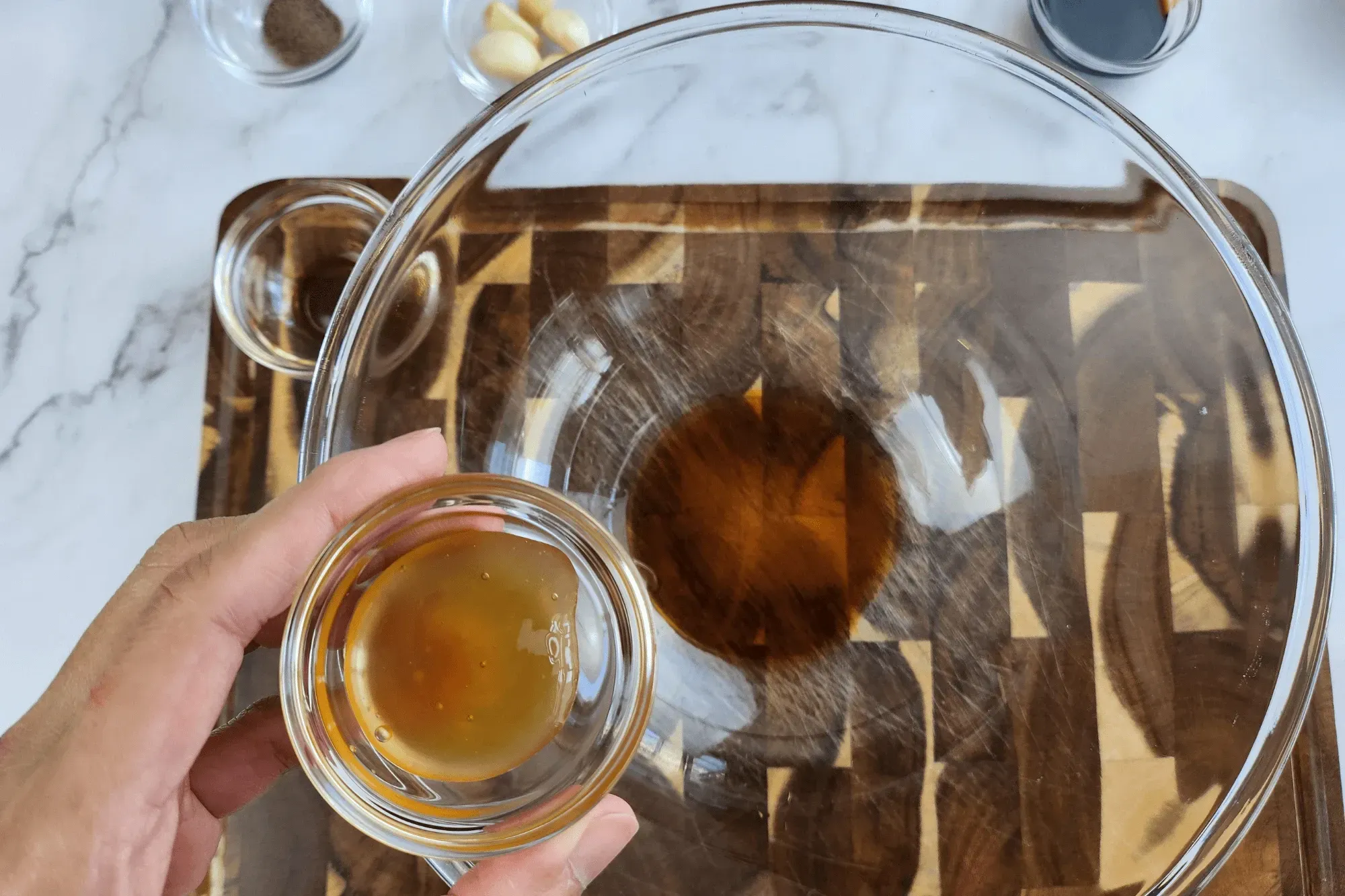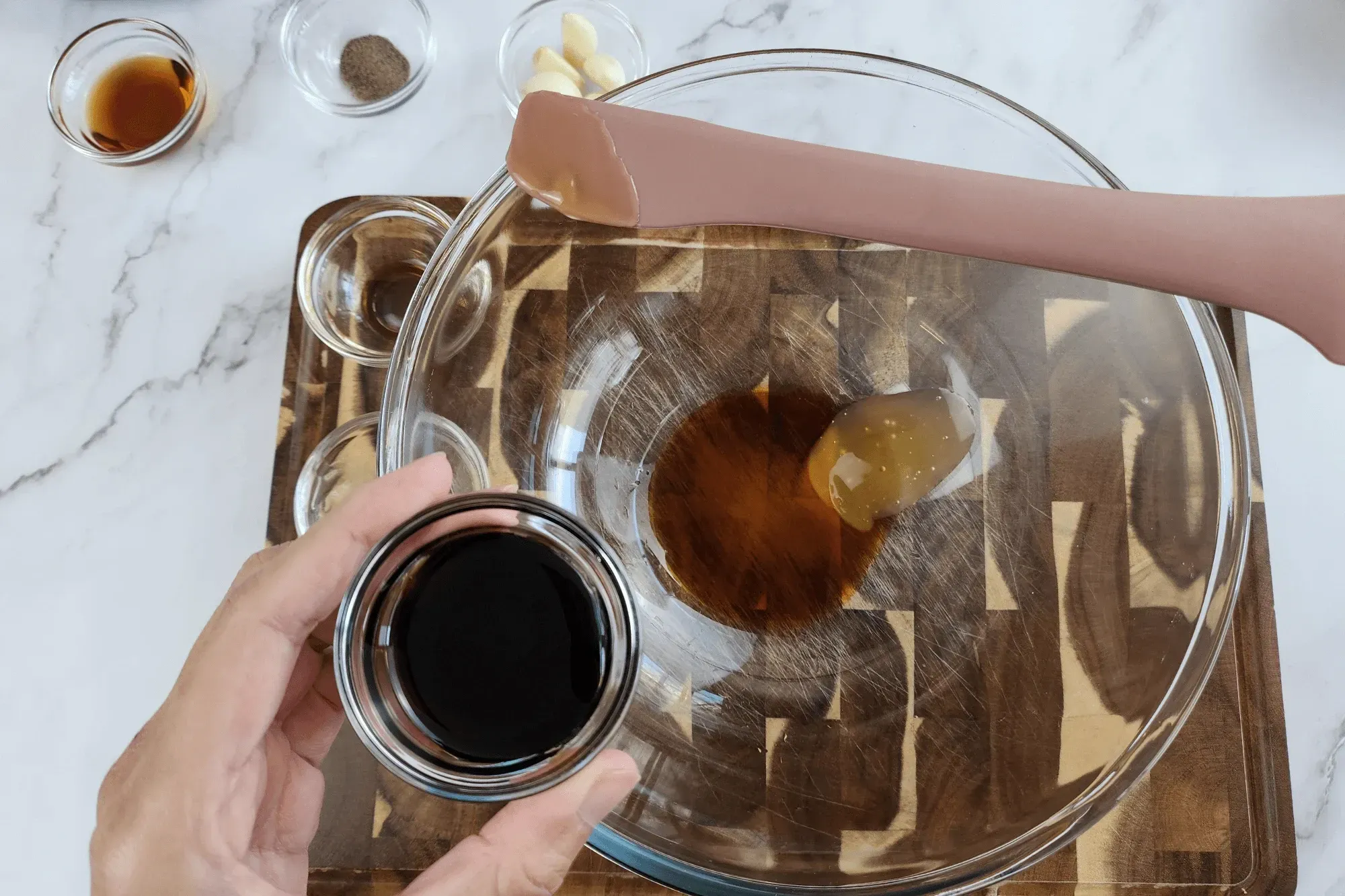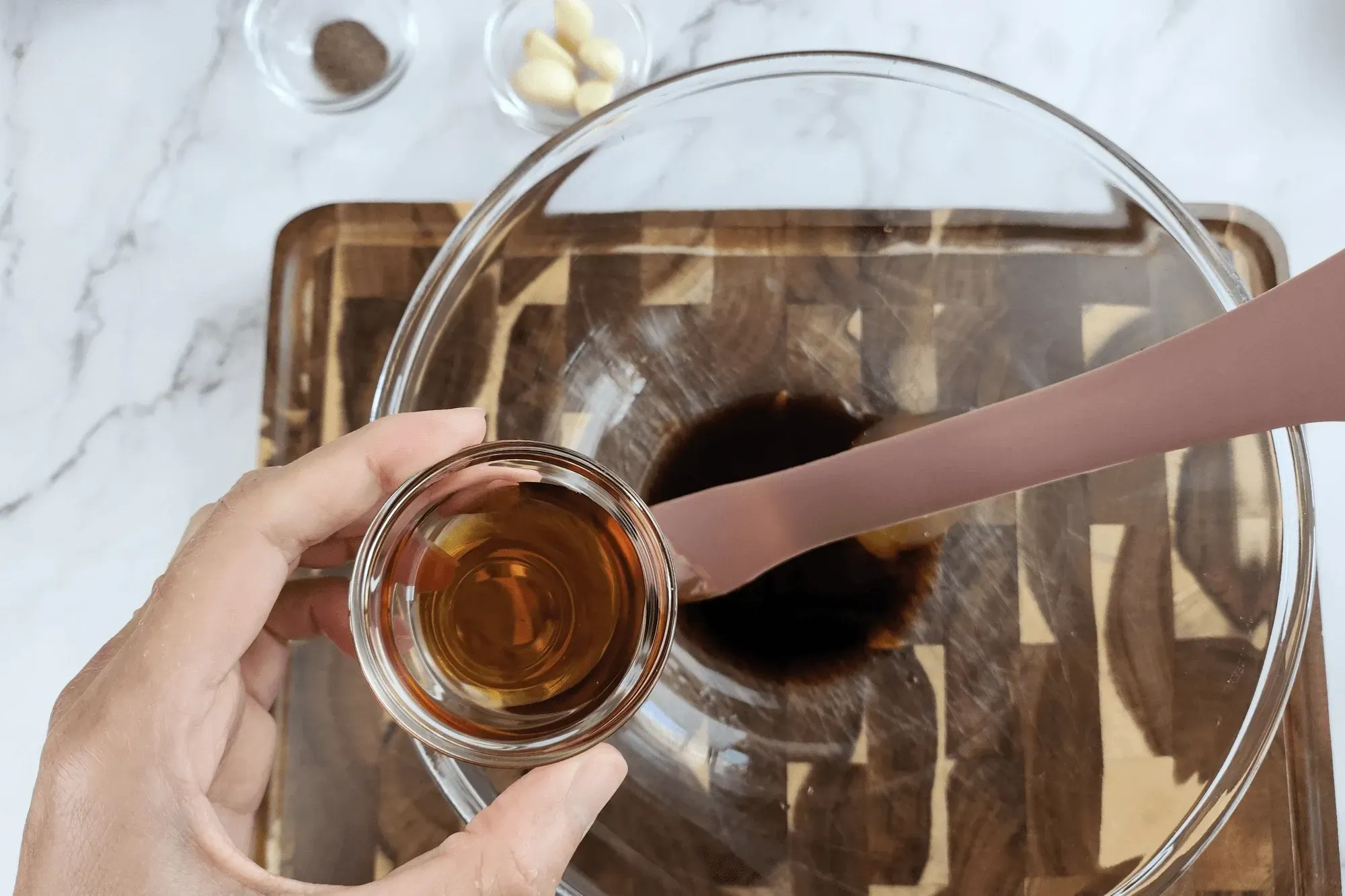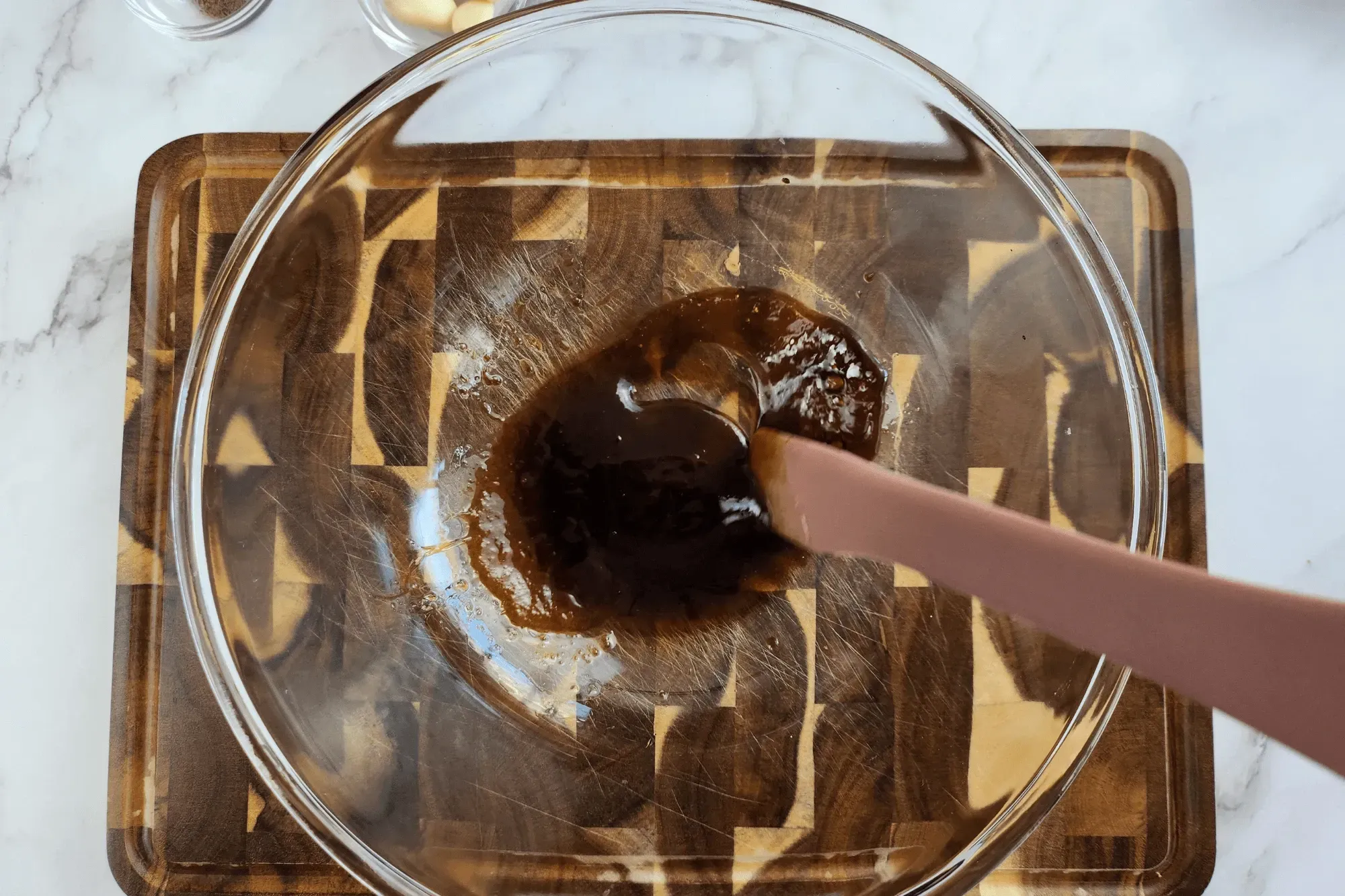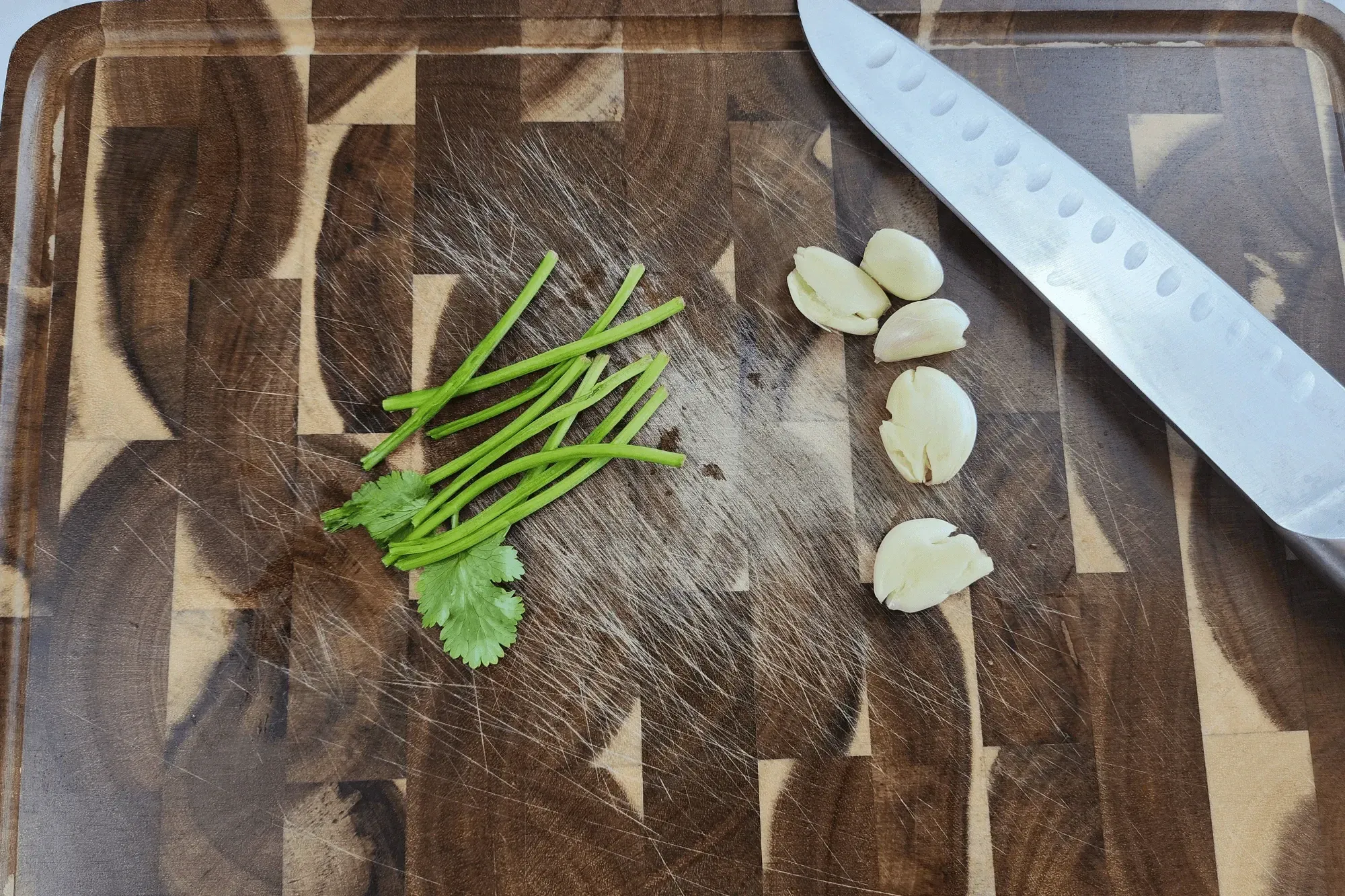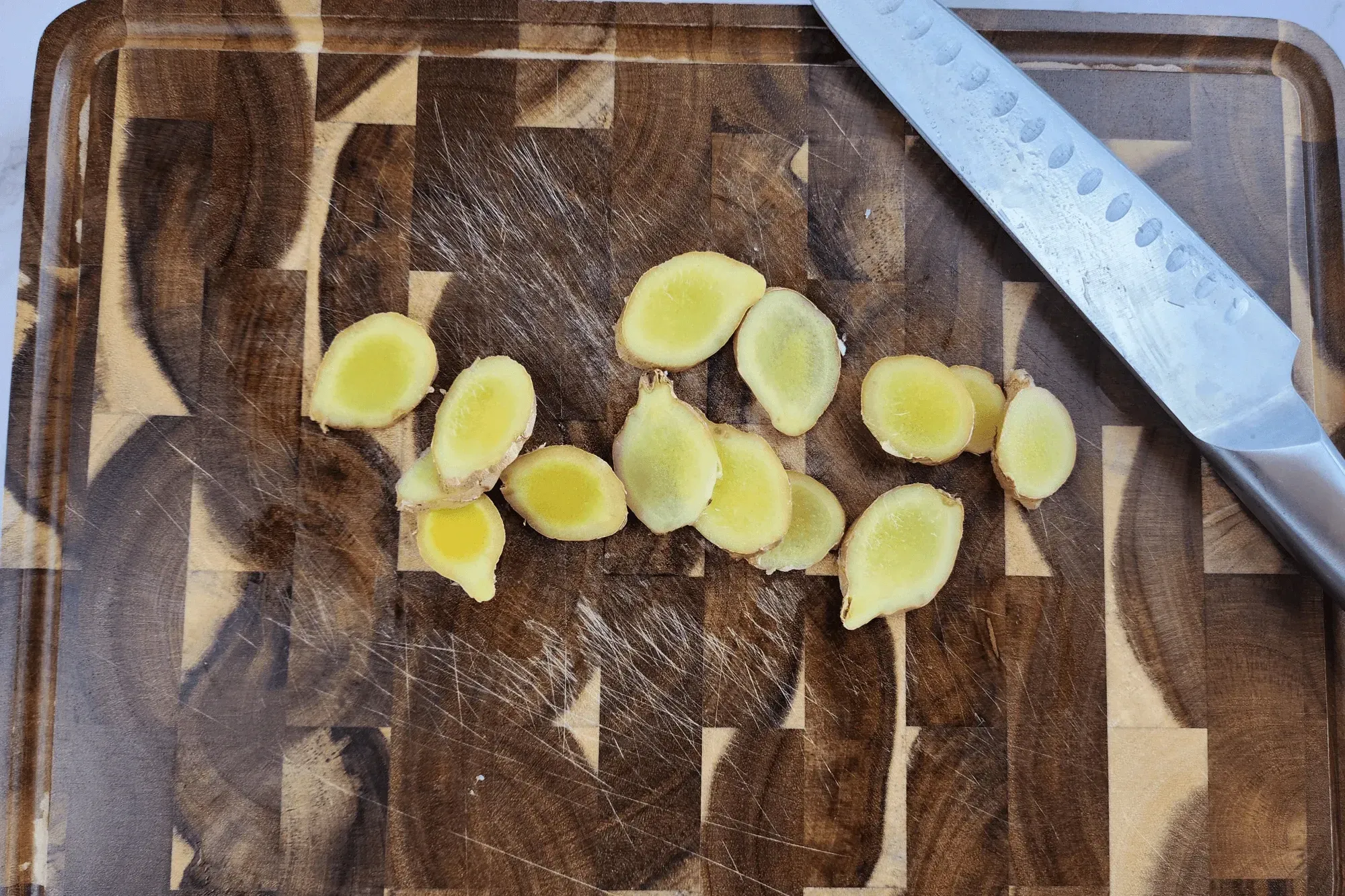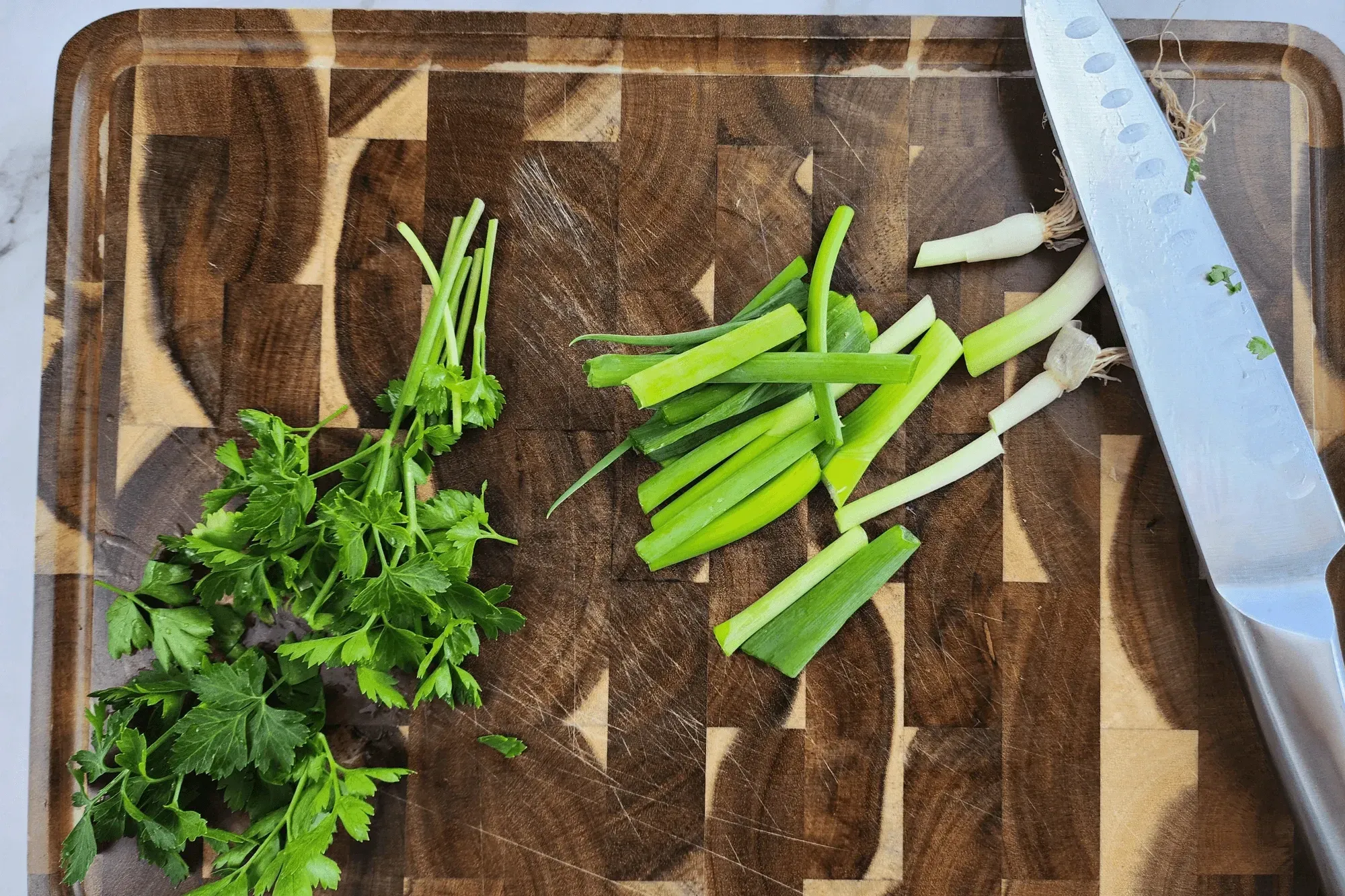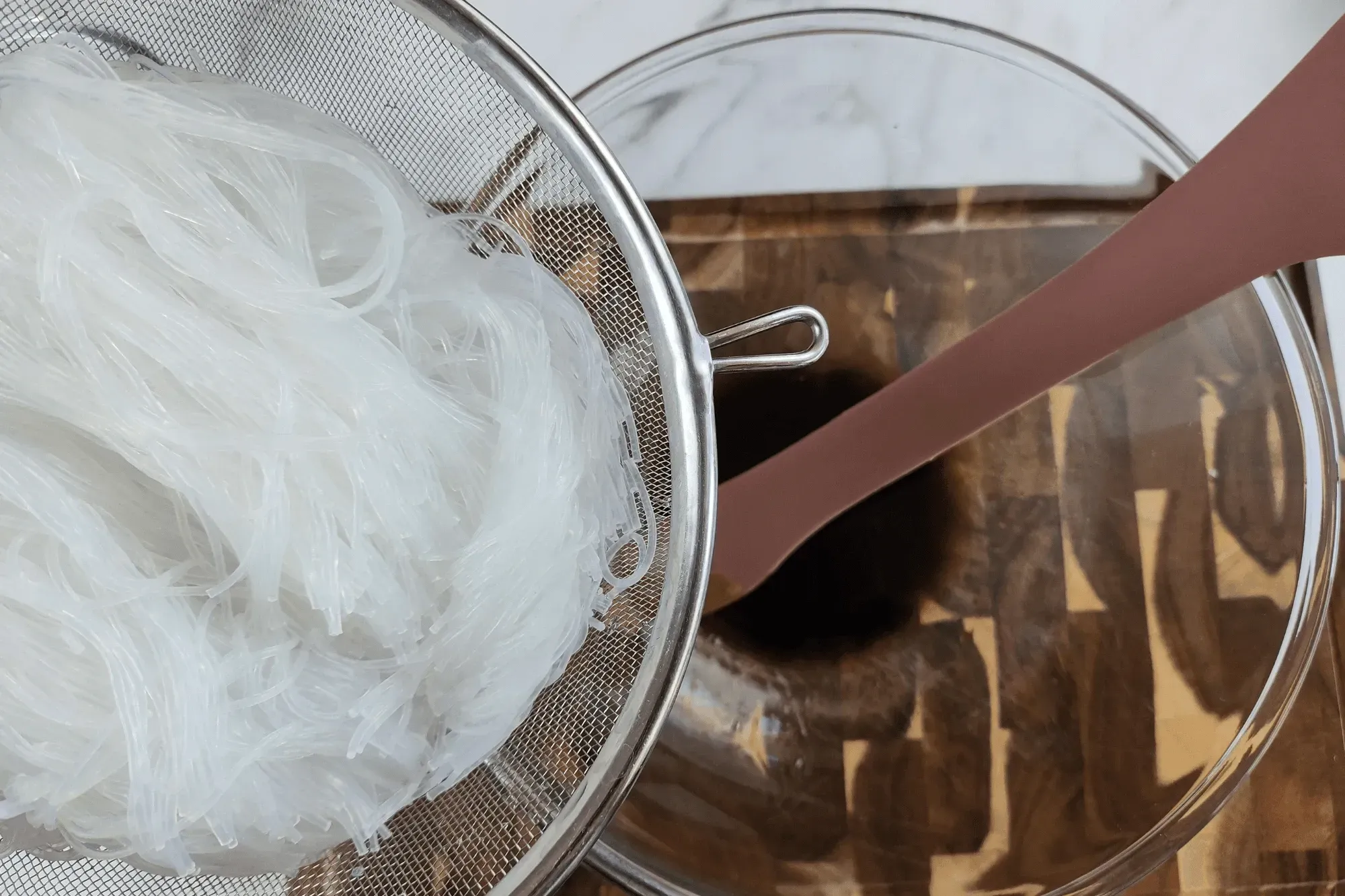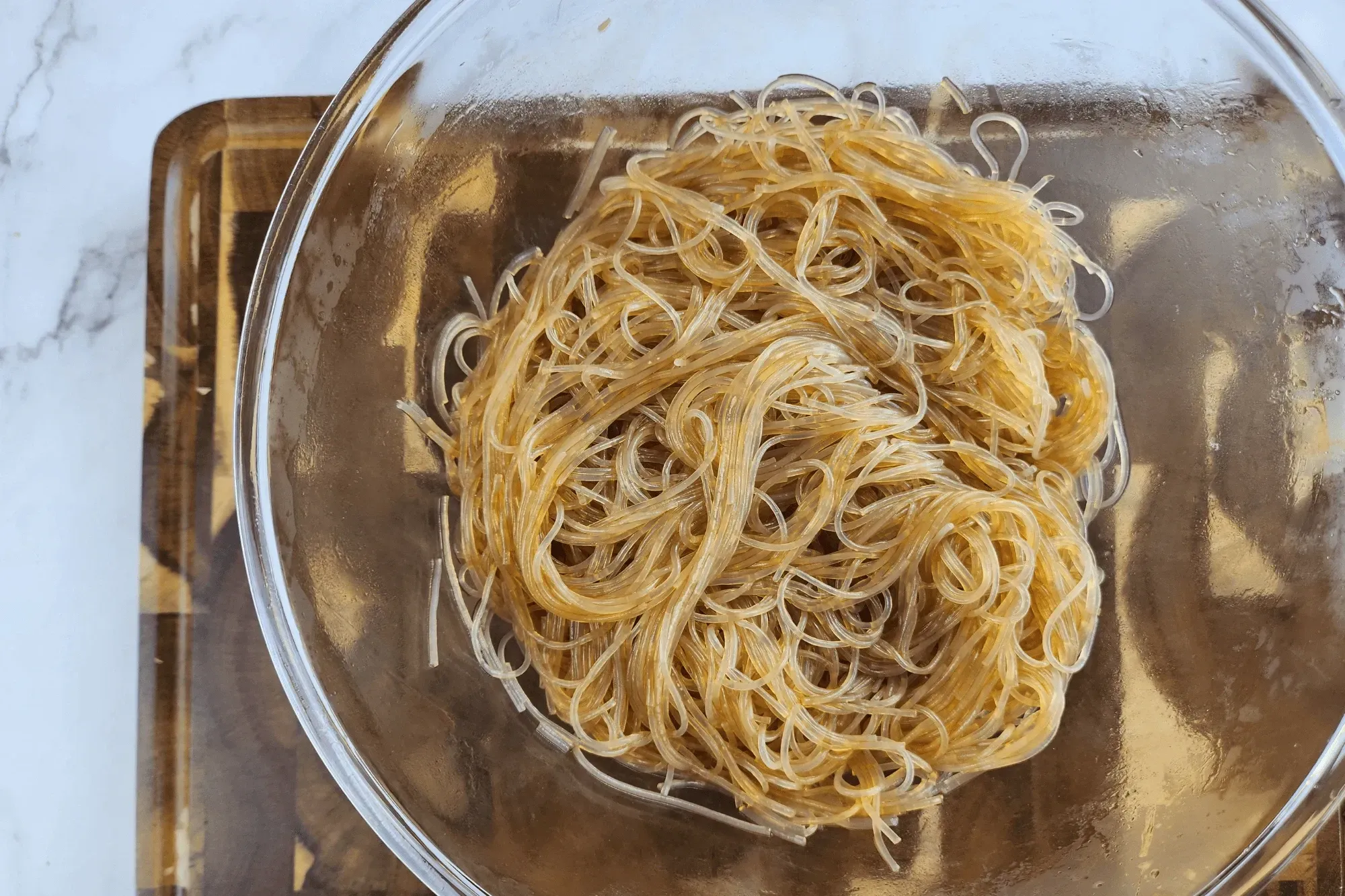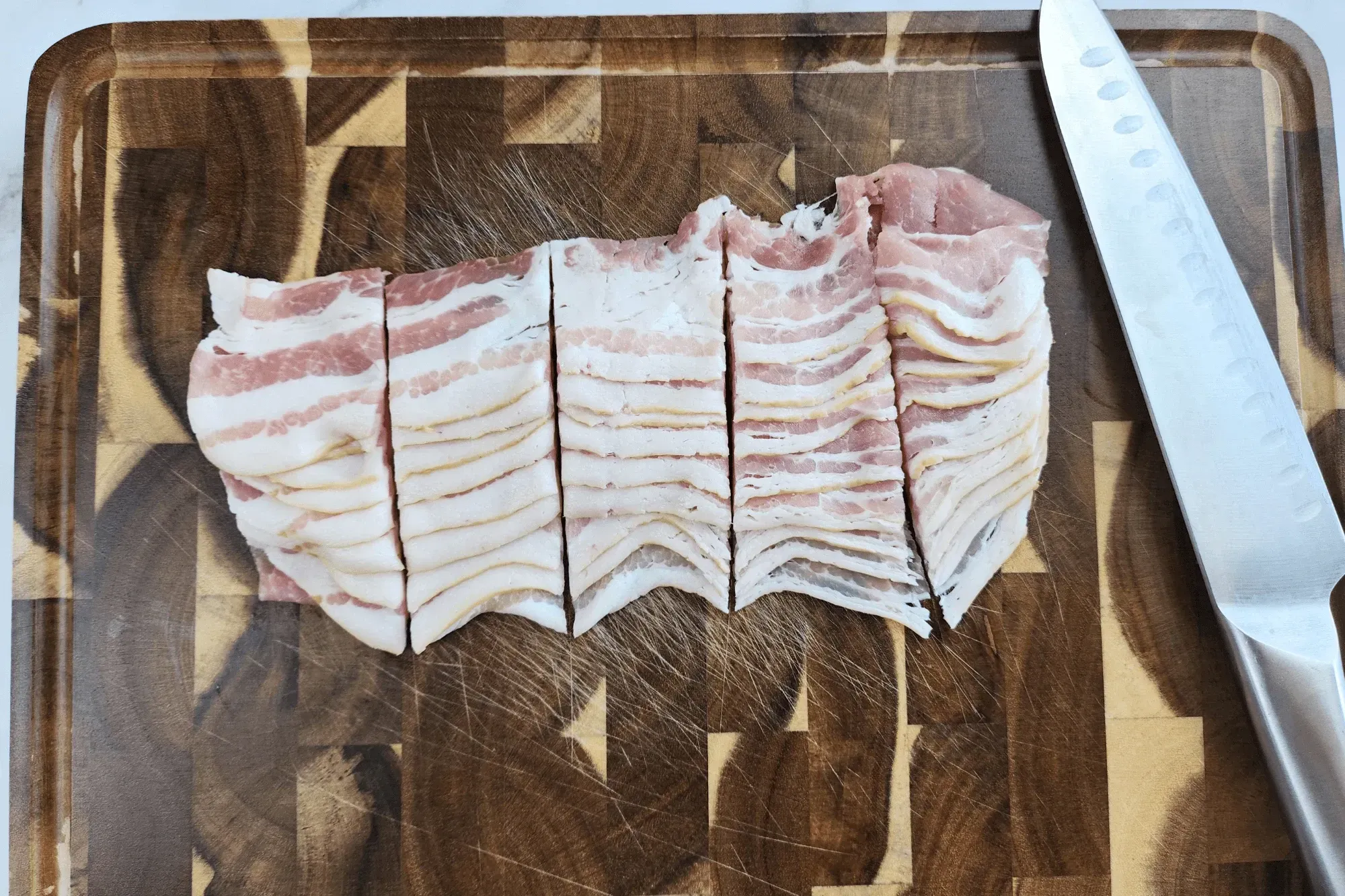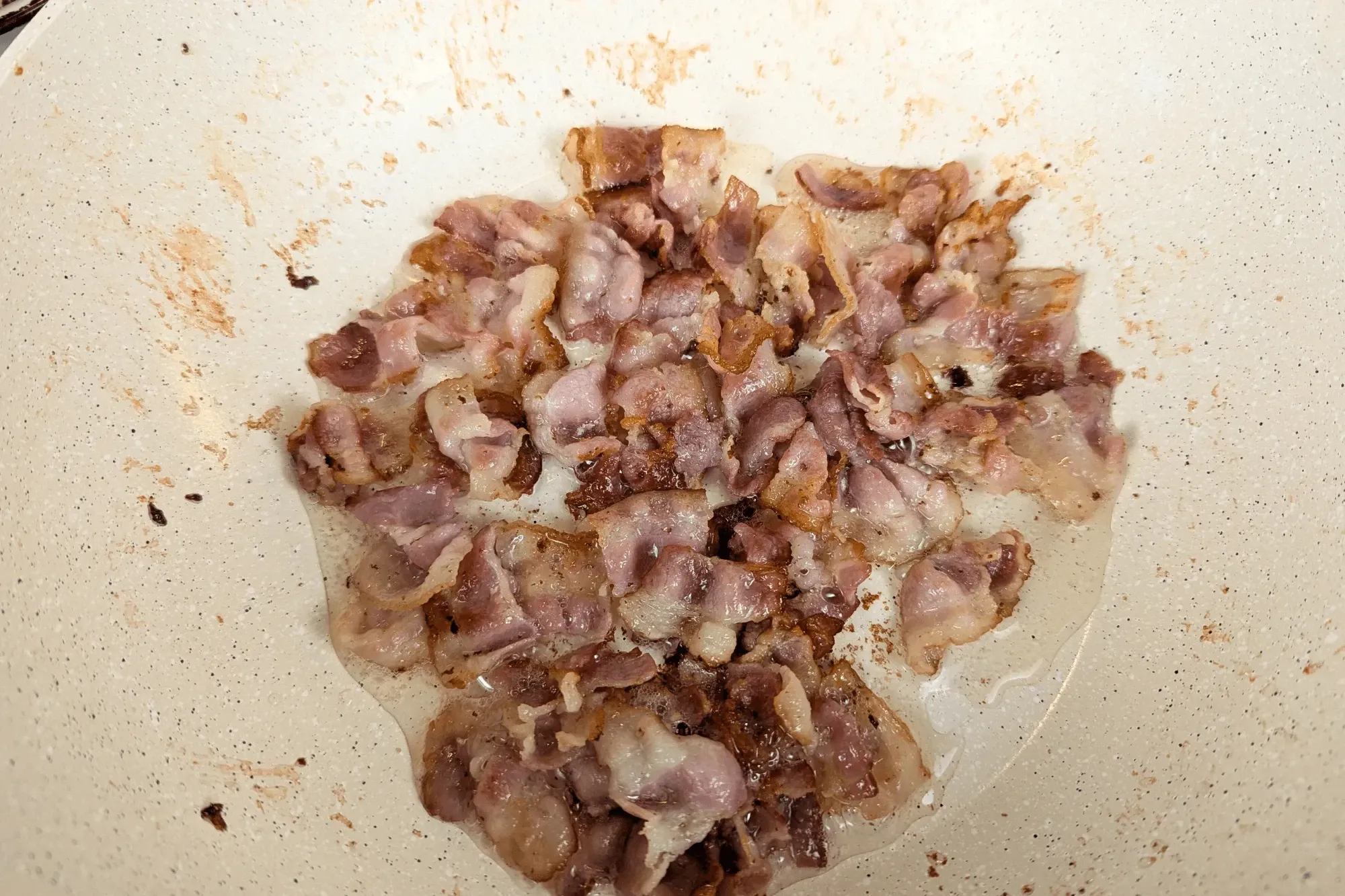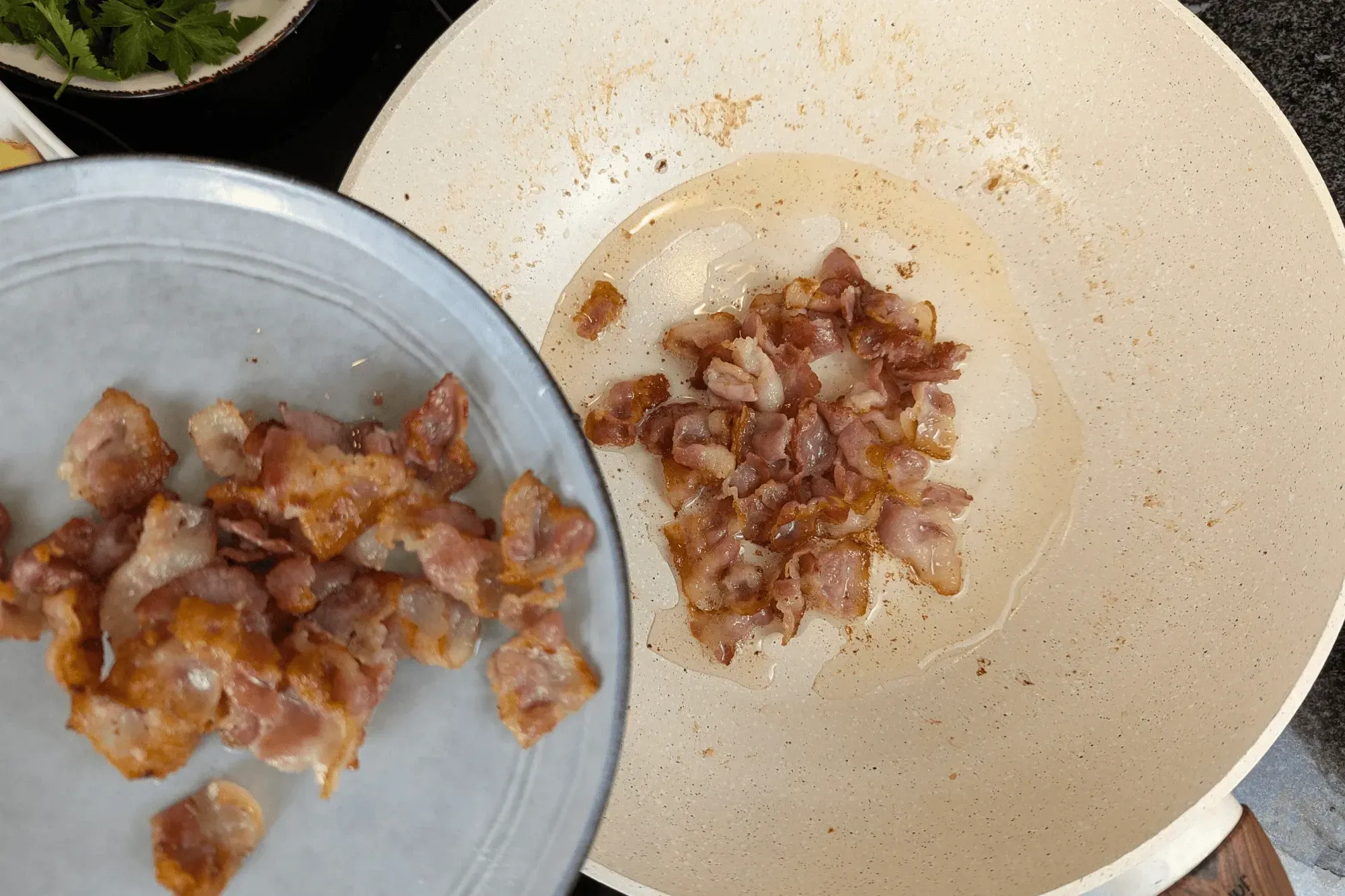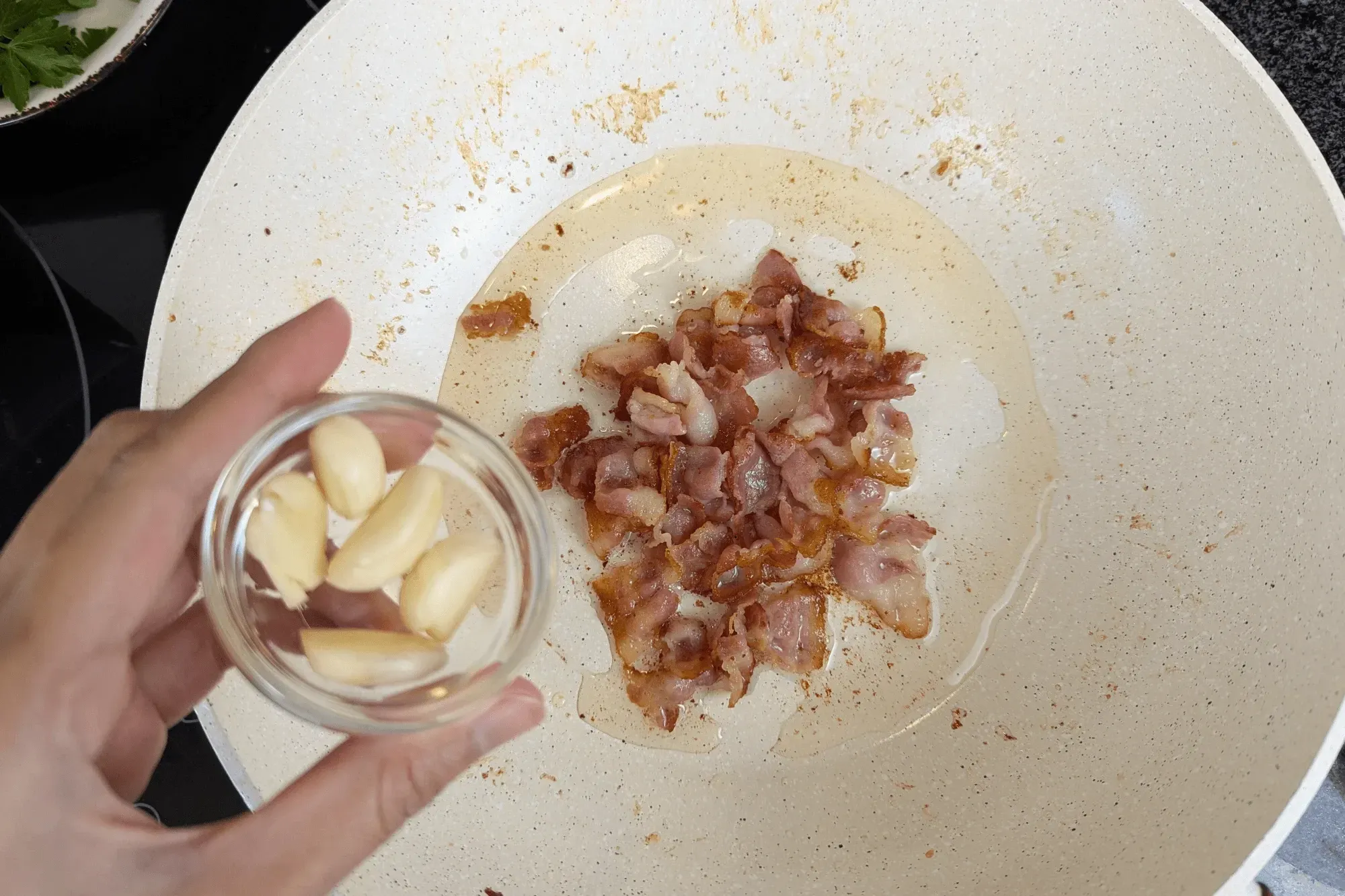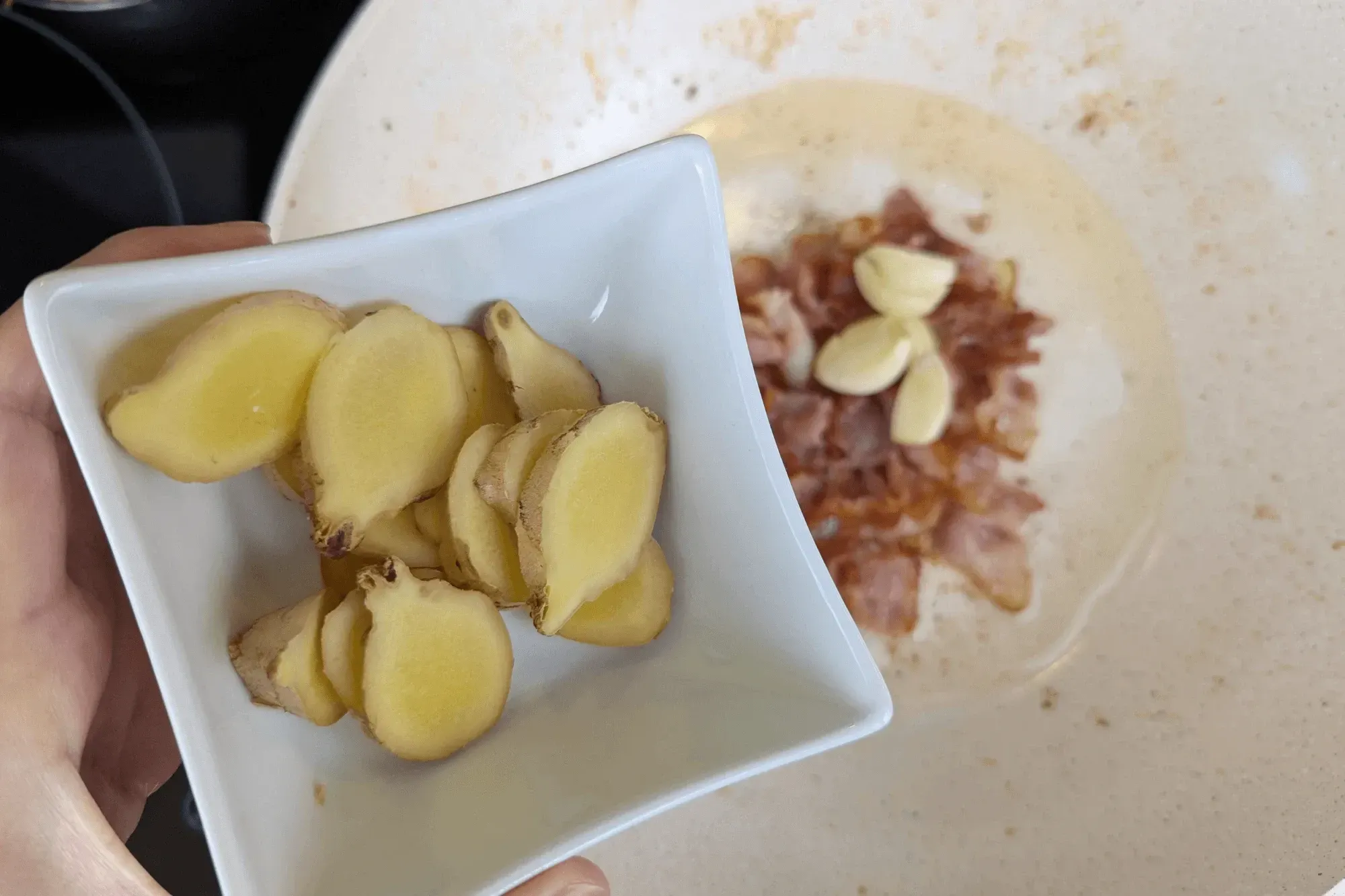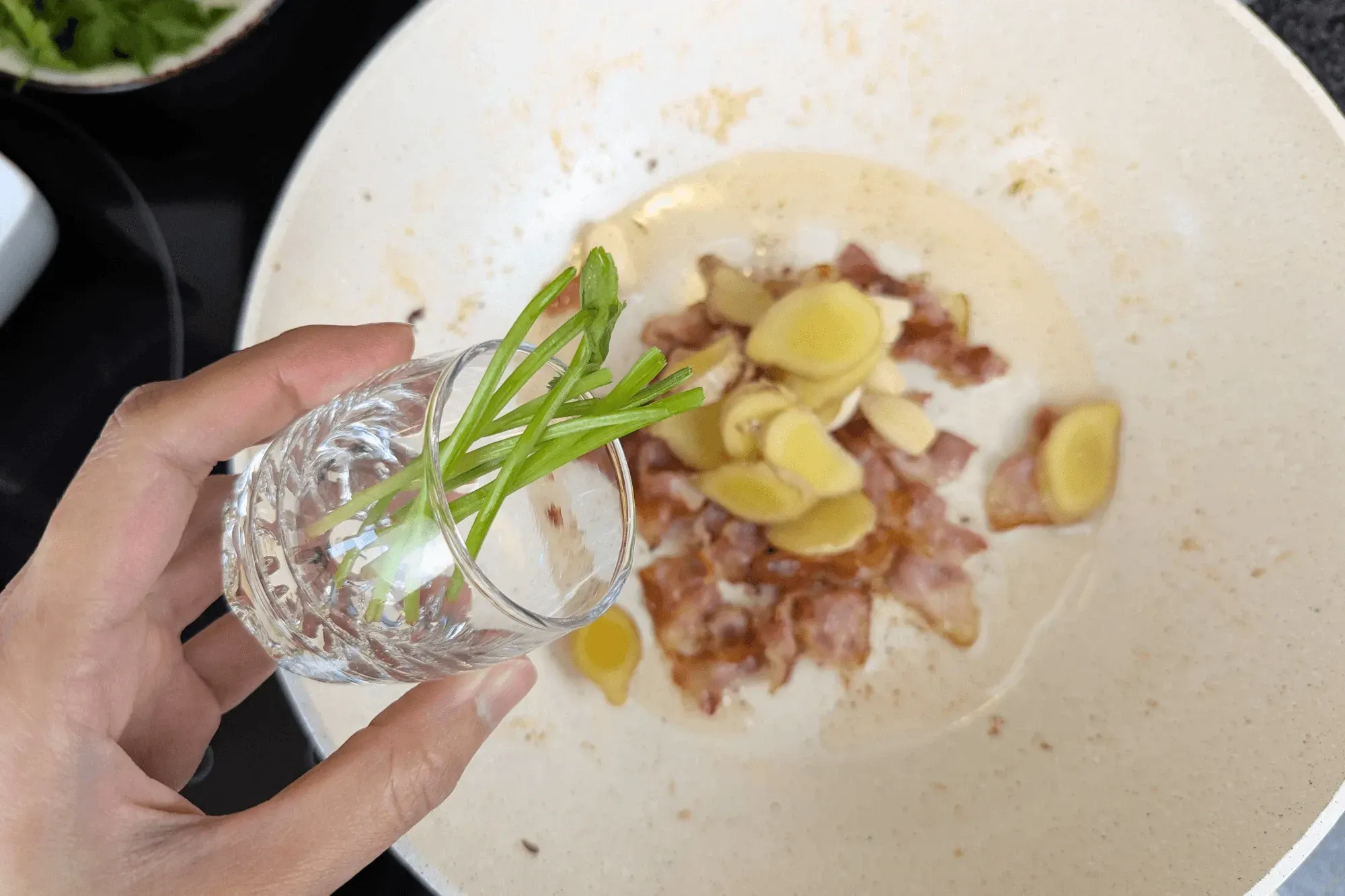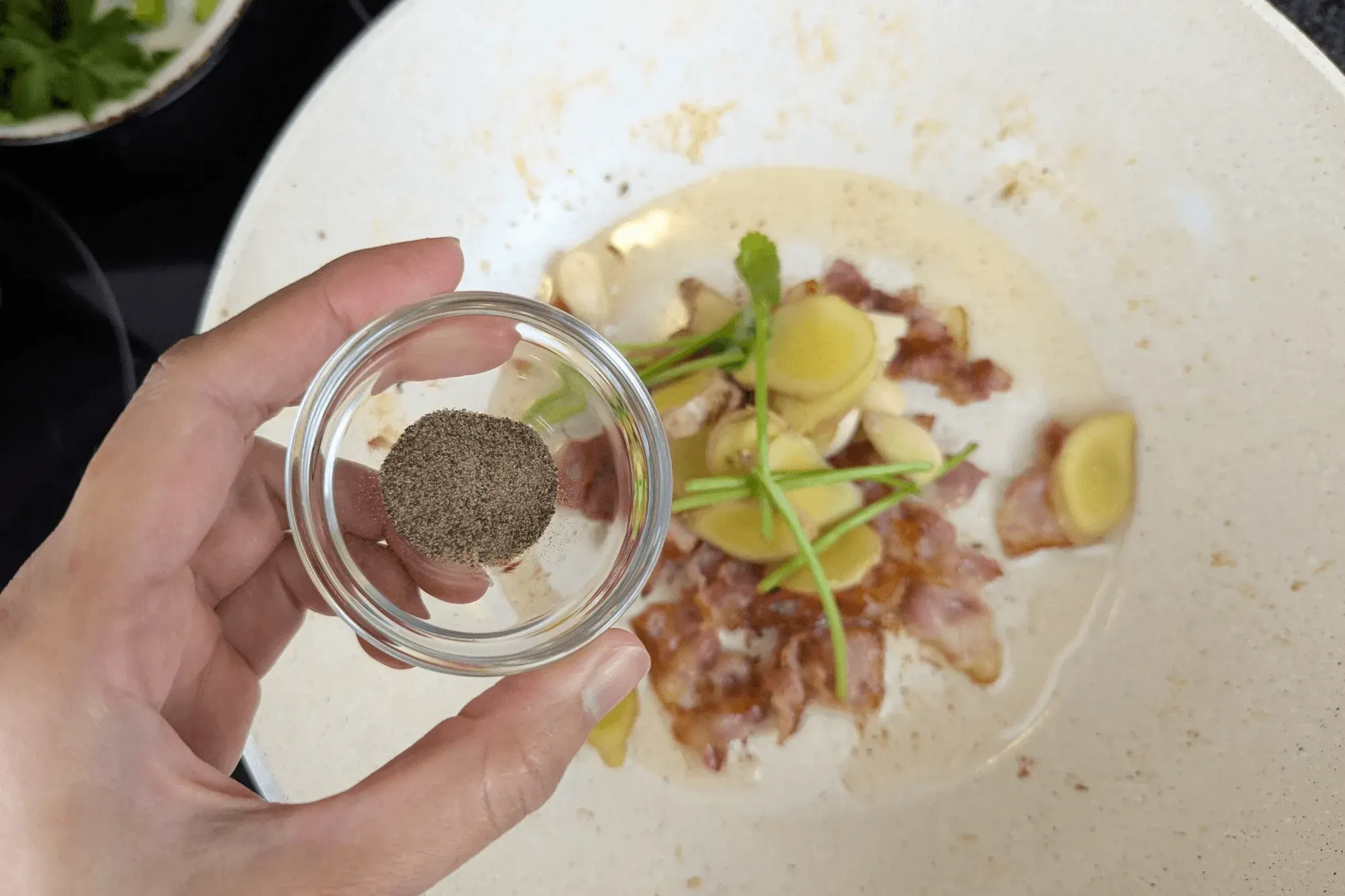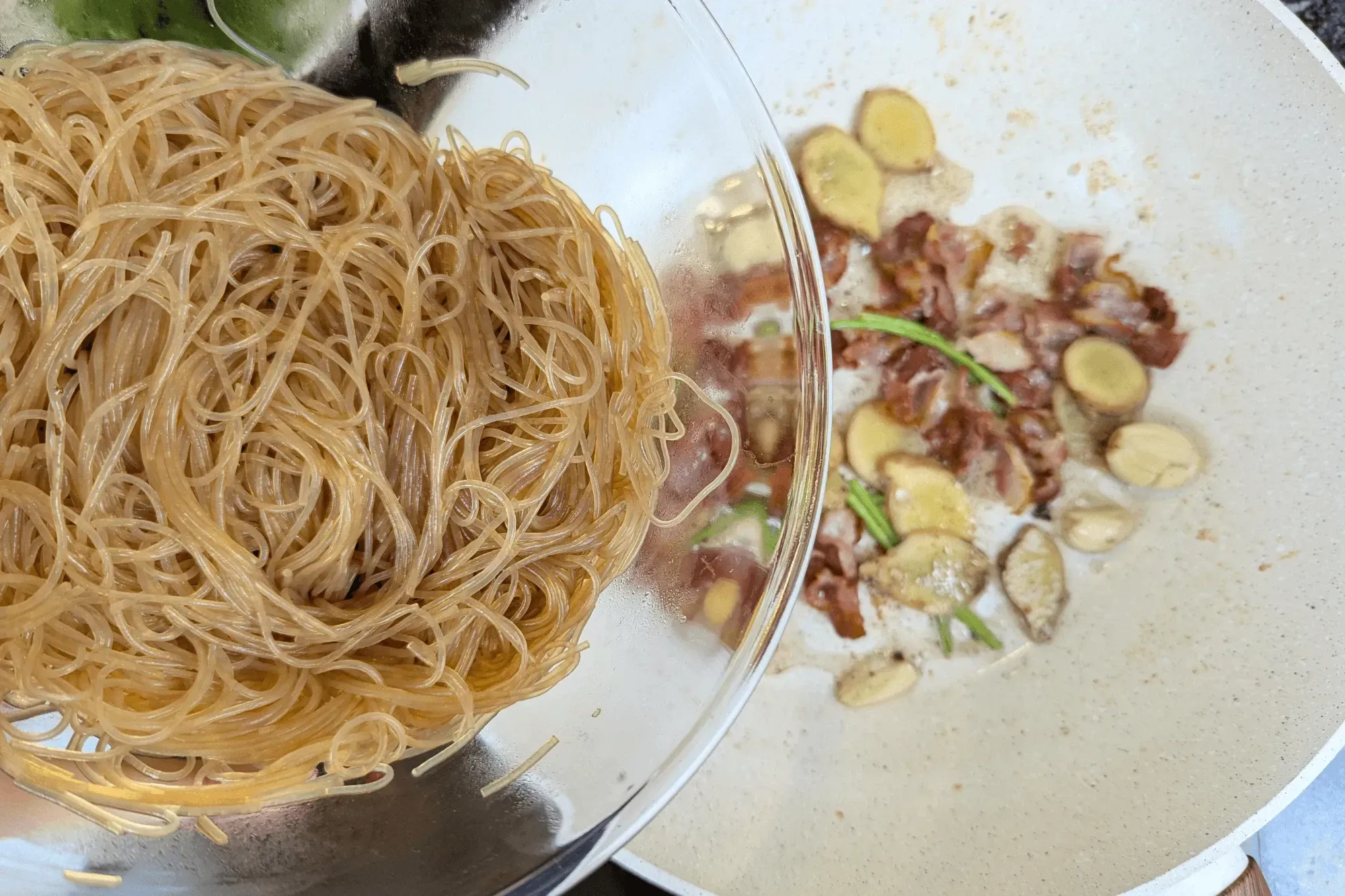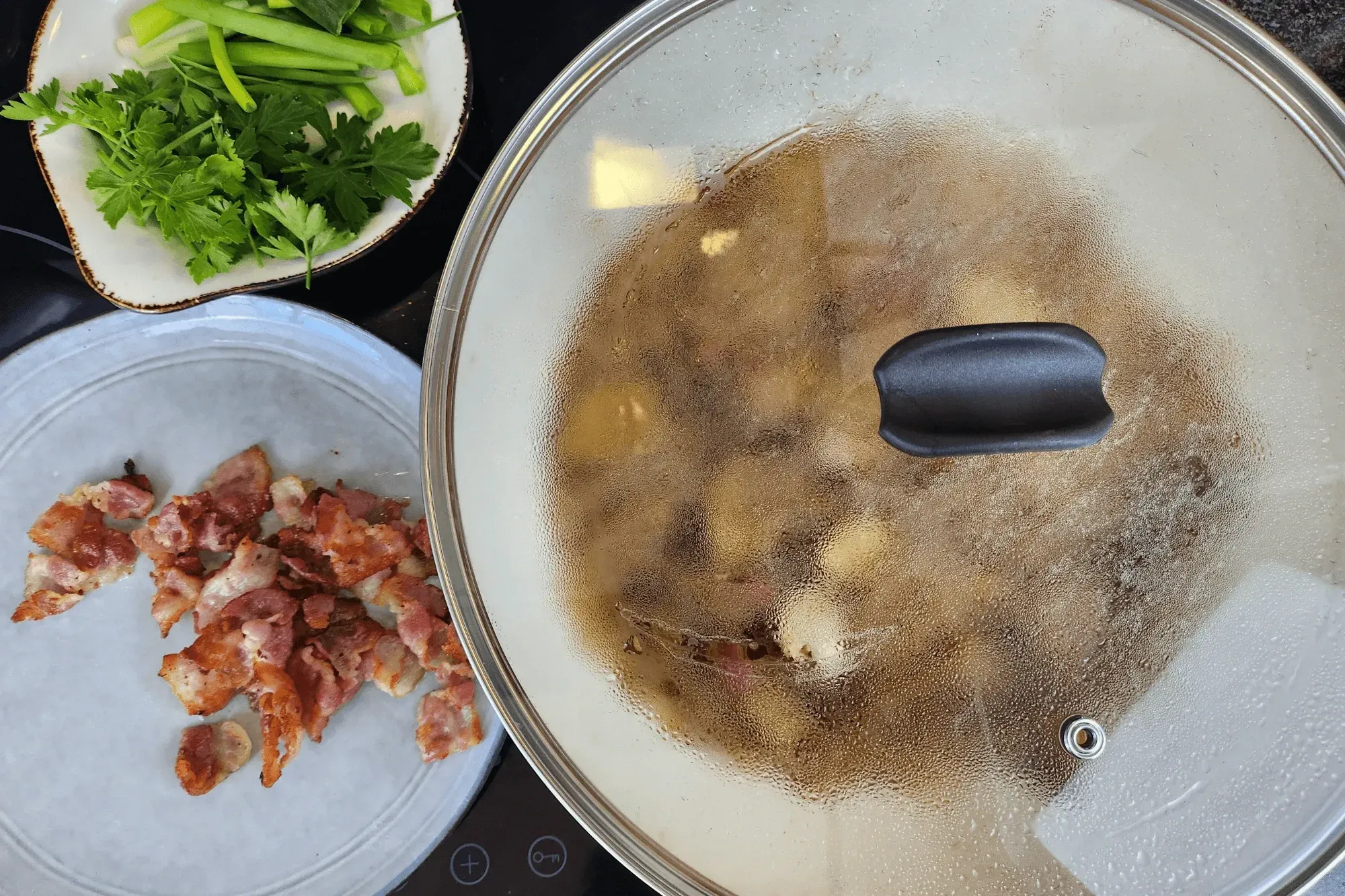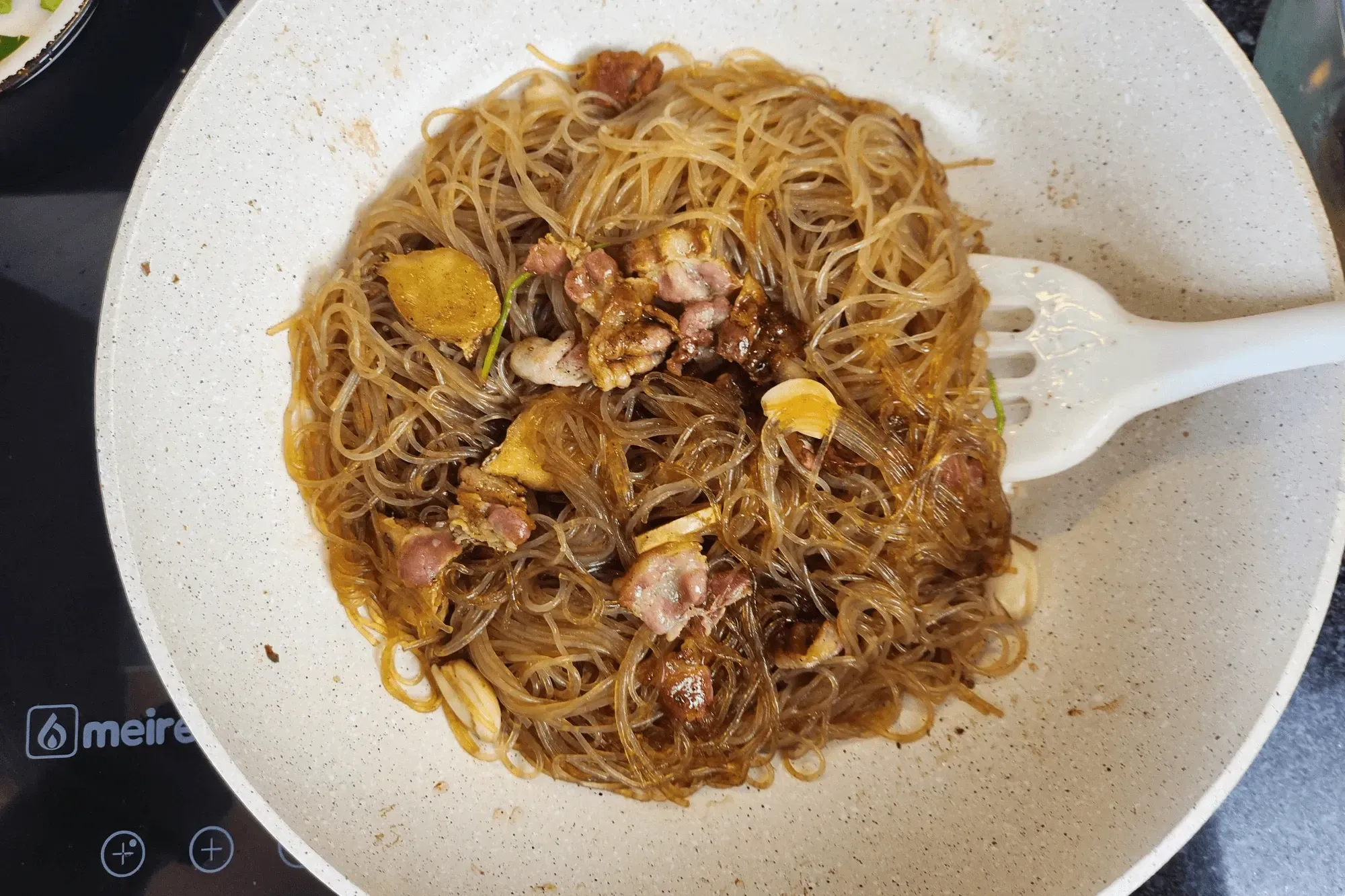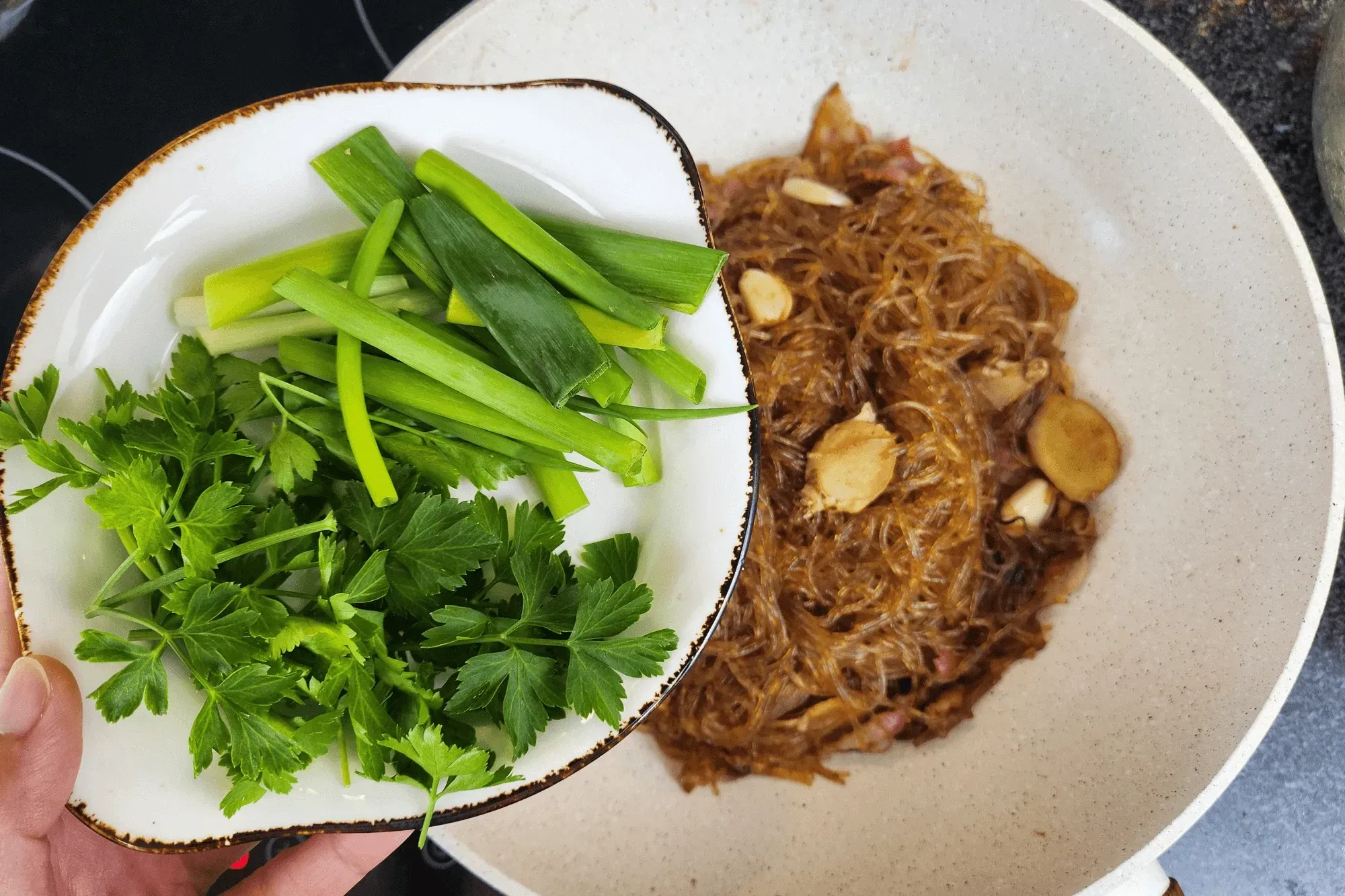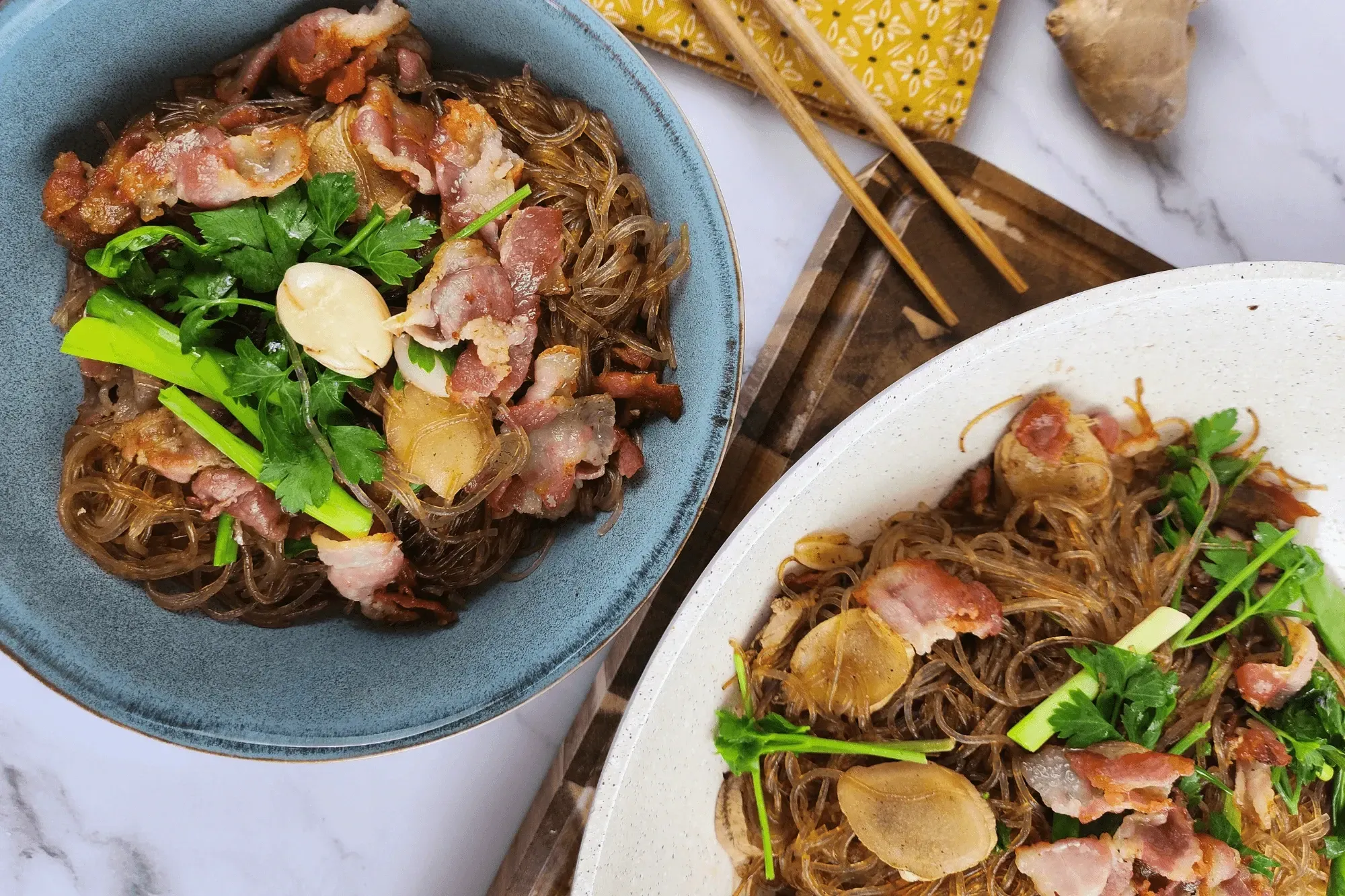Bacon Baked Glass Noodles
By Sho @ Hungry for Thai
on
Feb 3rd 2025 
Soft and chewy glass noodles infused with the rich aroma of bacon in every bite. This recipe highlights the deliciousness of glass noodles infused with a variety of aromatic ingrediens.
This post may contain affiliate links. As an Amazon Associate, I earn from qualifying purchases—at no extra cost to you. Thanks for supporting Hungry For Thai!
Table of Contents
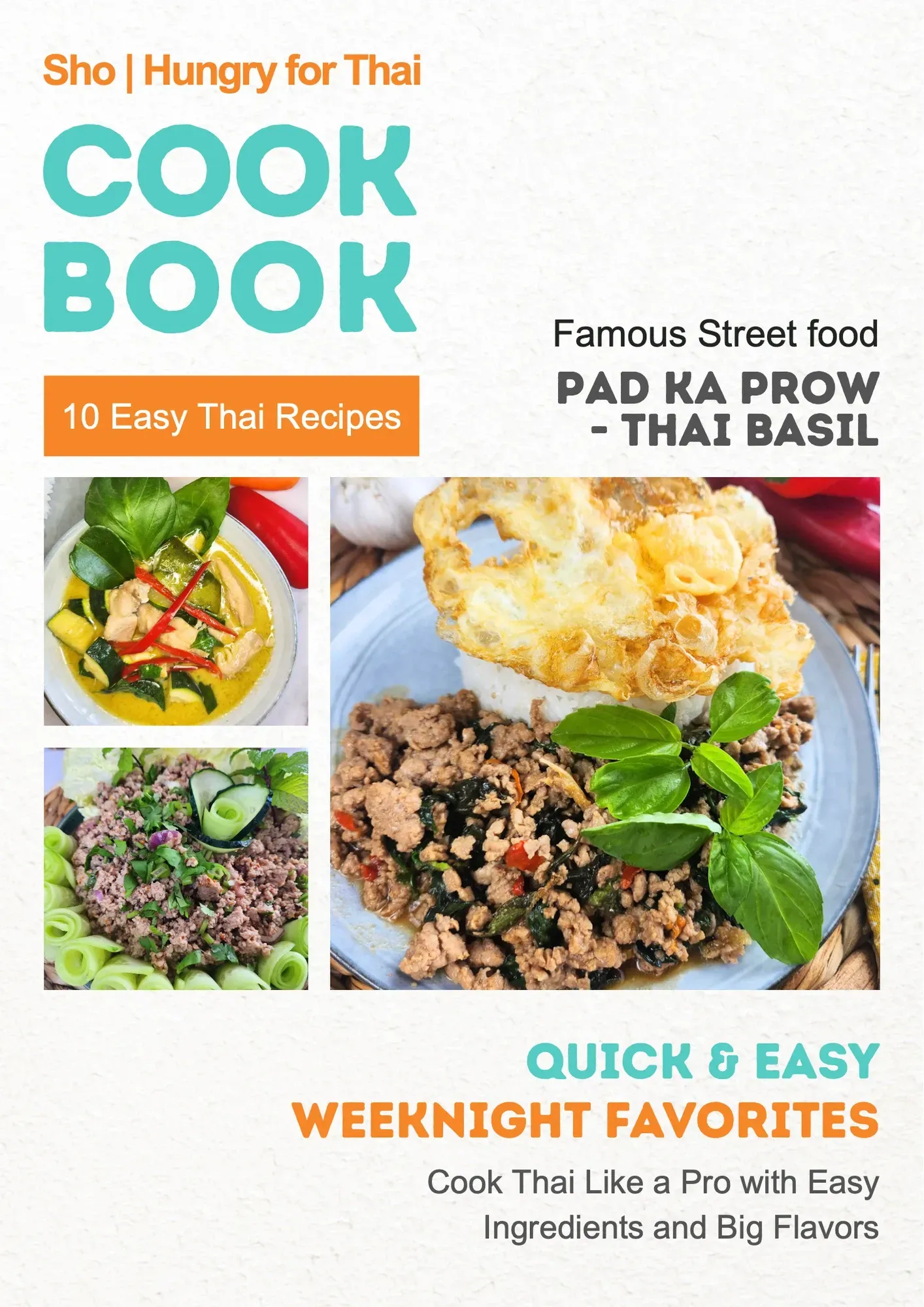
FREE DOWNLOAD
Get My Top 10 Easy Thai Recipes!
Download my top 10 easy Thai recipes absolutely free!
A popular Thai-Chinese fusion dish, the deliciousness of glass noodles comes from the variety of aromatic ingredients infused while being cooked in a pot, combined with simple yet flavorful seasoning.
What you'll need
- Light soy sauce – Adds a balanced saltiness and umami flavor.
- Oyster sauce – Provides a rich, slightly sweet depth to the dish.
- Sweet dark soy sauce – Enhances color and adds a subtle caramel-like sweetness.
- Water – Helps soften the glass noodles and blend flavors together.
- Black pepper – Brings a warm, earthy spice to complement the aromatics.
- Sesame oil – Adds a fragrant nuttiness and enhances the overall aroma.
- Glass noodles – Soft and chewy, they absorb all the delicious flavors of the sauce.
- Ginger – Lends a fresh, slightly spicy warmth to balance the richness.
- Bacon – Infuses the dish with a smoky, savory depth.
- Garlic – Enhances the aroma and adds a touch of pungency.
- Coriander root or stem – A key Thai ingredient that provides an earthy, herbal undertone.
- Chinese celery or Parsley – Gives a fresh, slightly peppery crunch to balance the richness.
- Spring onions – Adds a mild onion flavor and a pop of color.
Traditionally, this dish is known as Goong Ob Woon Sen (Steamed Prawns with Glass Noodles), but I’m giving it a little twist by using bacon—an ingredient that’s almost always stocked in every household.
This version brings a rich, smoky depth to the dish while keeping the comforting flavors intact.
This is another glass noodle dish that I really love. In Thailand, we commonly use glass noodles in a variety of dishes, such as clear soup: Stuffed Cucumber Soup , Stir-Fried Glass Noodles (Pad Woon Sen), spicy glass noodle salad (Yum Woon Sen), spring roll fillings, or even in Thai noodle soups.
This dish is a fulfilling meal on its own—I don’t even need to pair it with rice because the glass noodles are already satisfying enough.
Plus, it’s an easy recipe that uses simple ingredients commonly found in the kitchen, making it perfect for a quick yet delicious meal.
The glass noodles soak up the sauce and the smoky aroma of the bacon, ensuring that every bite is packed with rich, well-balanced flavors. Eating it hot, with crispy bacon and a hint of aromatic spices, makes it even more enjoyable.
FAQs
Glass noodles (also called cellophane noodles) are transparent, chewy noodles made from starch, typically mung bean or sweet potato.
They soak up flavors beautifully, making them perfect for this Bacon Baked Glass Noodles recipe!
The most common glass noodles are made from mung bean starch, but some varieties use sweet potato starch, especially in Korean cuisine. If you’re wondering about the type you have, check the ingredients on the package!
Yes! Most glass noodles are naturally gluten-free since they’re made from starch, not wheat. However, always double-check the packaging to be sure.
If you’re making this dish gluten-free, also use gluten-free soy sauce and oyster sauce alternatives!
Super easy! Just soak them in warm water for about 10–15 minutes until they’re soft, then drain.
They’ll finish cooking when you stir them into the sauce in the pan. No need to pre-boil!
They’re made by mixing starch with water, forming a dough, and then pressing it into thin noodle strands that dry and turn clear when cooked. Pretty cool, right?
Normally, this dish is made with shrimp (like “Goong Ob Woon Sen”), but this version gives it a savory, smoky twist by using crispy bacon instead.
It’s a fun, easy take on a classic Thai-Chinese dish, using ingredients that many people already have at home!
Absolutely! If you want a vegetarian option, swap the bacon for mushrooms or tofu for that umami flavor.
If you prefer seafood, you can go back to the classic shrimp or even scallops!
Yes! Korean glass noodles (sweet potato starch noodles) have a slightly different texture – they’re chewier and bouncier.
They’ll work great in this dish but may need a little extra soaking time before cooking.
Most likely! Glass noodles are available at Asian grocery stores, international aisles in supermarkets, or online.
If you can’t find them, look for names like cellophane noodles, mung bean noodles, or Korean dangmyeon!
It's the ideal dish for days when you crave something tasty but don't want to spend too much time cooking!
Leave me a comment below if you try this recipe out! 😉🔽
Bacon Baked Glass Noodles
Prep time
15 minutes
Cook time
15 minutes
Serves
2
Ingredients
Steps
-
Cooking Bacon Baked Glass Noodles :
-
Soaked glass noodles in the warm water for 10 minutes or until it becomes soften.
-
Mix light soy sauce, oyster sauce, sweet dark soy sauce, and sesame oil together to make the seasoning sauce.
-
Crunch the garlic and coriander root/stem to release the aroma.
-
Slice the ginger into round shape. Then cut spring onions and parsley into chunks.
-
Mix the soaked glass noodles with the sauce and let them sit for 5 minutes.
-
Cut the bacon into 1-inch pieces and pan-sear until it releases its oil. Set some of the bacon aside for garnish and keep the bacon fat for later use.
-
In the same pan, sauté garlic, ginger, coriander root, and pepper until fragrant.
-
Place the marinated glass noodles on top of the cooked bacon. Cover the pan and occasionally flip the noodles to ensure even cooking. Mix well. In this step you can taste the sauce and adjust if needed.
-
When the noodles start drying out, add spring onions and Chinese celery. Cover the pan and let them soften.
-
Plate the Bacon Baked Glass Noodles, garnish with crispy bacon, and sprinkle extra Chinese celery on top. Enjoy!
-
Nutritional info
% of daily valueCalorie Breakdown
Protein
132 cal
Fat
558 cal
Carbs
457 cal
Tips
- If the bacon is too salty, reduce the amount of soy sauce and other seasonings.
- After soaking the noodles in the sauce, if you prefer a slightly darker color, you can add extra dark soy sauce.
- For this recipe, I used 120 grams of dried glass noodles. After soaking in water, their volume doubles in size. I didn’t add any salt because the sauces and bacon already provide enough saltiness. However, when serving, feel free to adjust the seasoning to your taste if you prefer a stronger flavor. And if you’re a bacon lover, go ahead and add more bacon to make it even better! 😊🥓
Leave A Comment
More recipes to try…
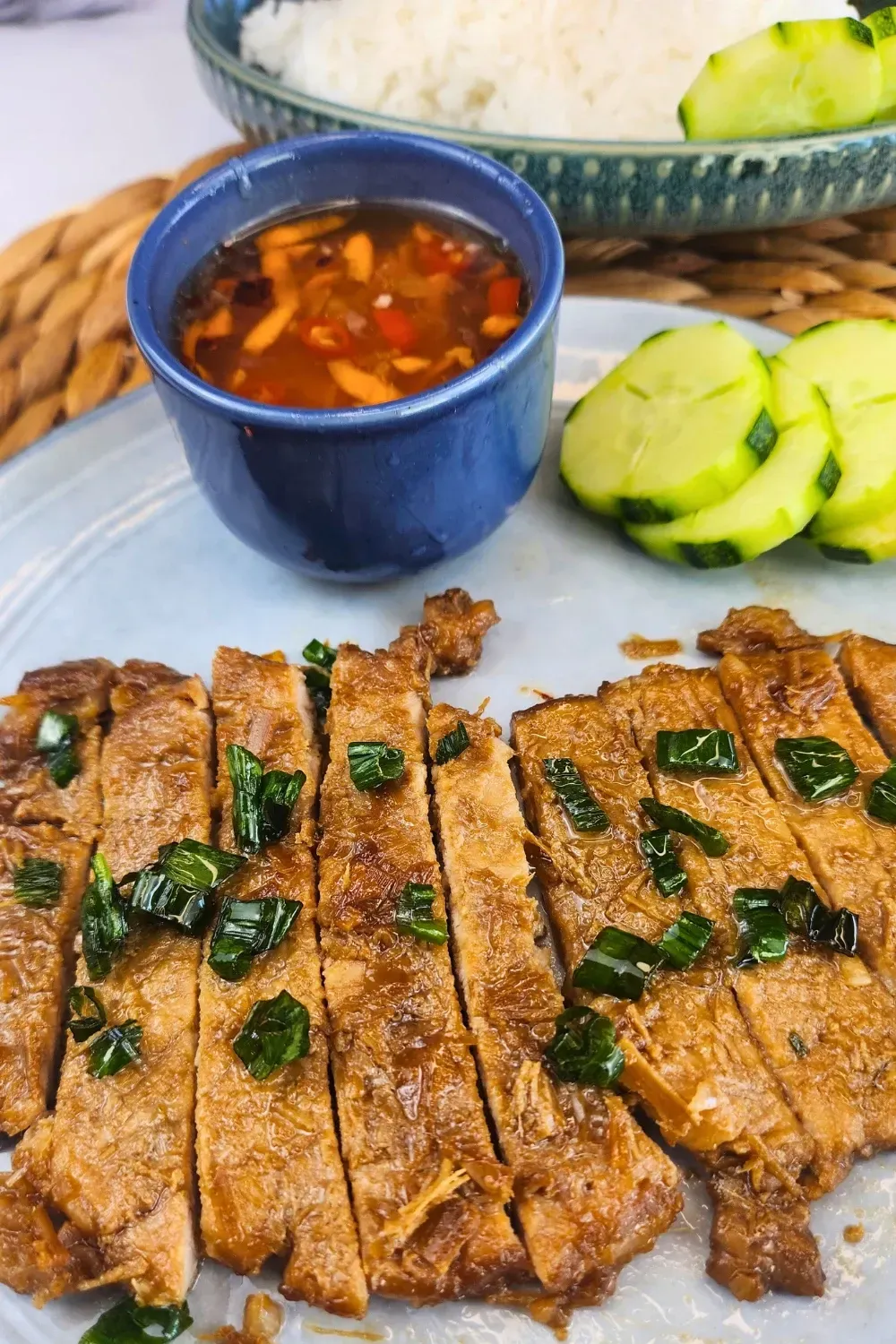
Juicy Lemongrass Pork Chops
19th August 2025
This Vietnamese lemongrass pork chops recipe is perfect for meal prep, easy weeknight dinners, or even a weekend BBQ. Juicy, flavorful, and marinated overnight for maximum taste, these chops pair beautifully with steamed rice, sticky rice, or vermicelli noodles. For the ultimate combo, don’t forget the tangy dipping sauce—it ties everything together with a balance of sweet, salty, and zesty flavors that make every bite irresistible.
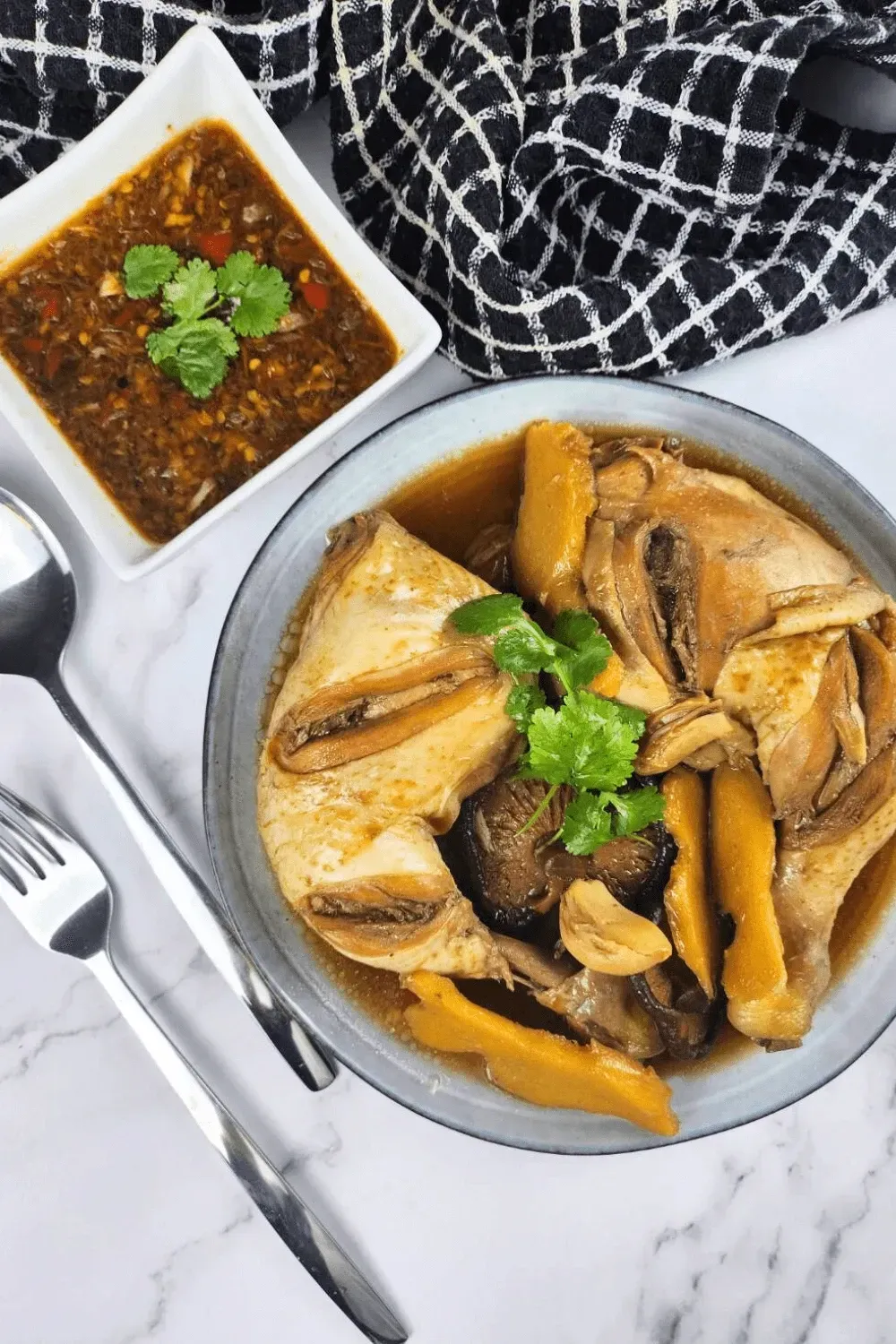
Soy Sauce Chicken (See Yao Gai)
6th January 2025
"Soy Sauce Chicken (See Yao Gai)" is a dish inspired by "Cantonese-style boiled chicken", adapted to suit the flavors preferred by Thais. It is commonly enjoyed as a main dish, paired with steamed rice, or served with a flavorful and spicy dipping sauce for an extra kick.
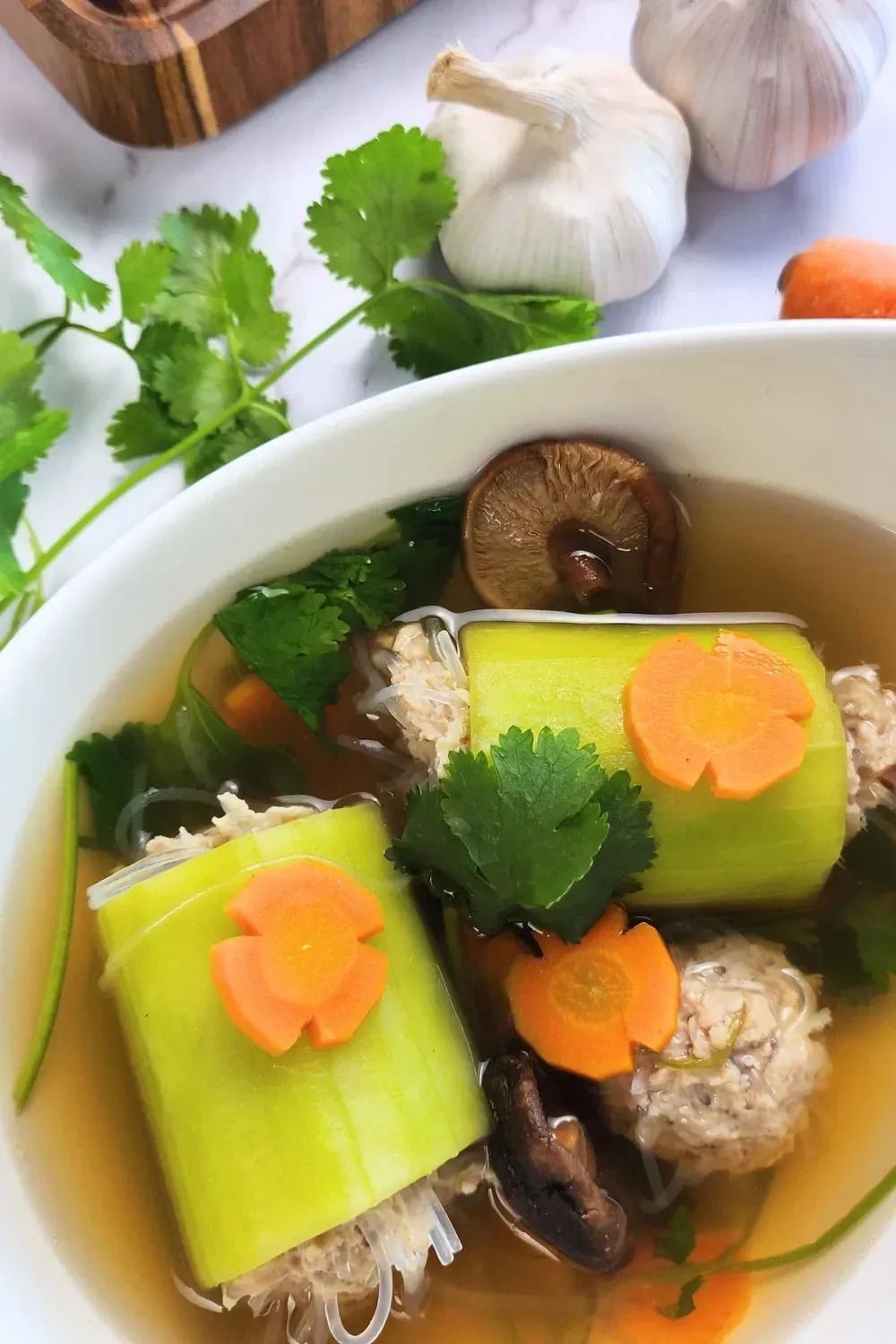
Stuffed Cucumber Soup
27th December 2024
This is one of my all-time favorite soups—light, comforting, and perfect to enjoy any time of the year. It’s soothing when you’re not feeling your best, gentle on the throat, and makes a cozy family meal everyone can enjoy. It’s especially great for kids who are picky with vegetables or for anyone who prefers mild, non-spicy flavors.

